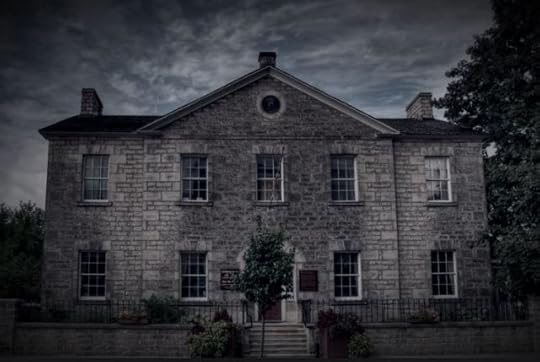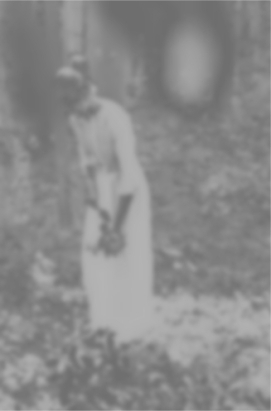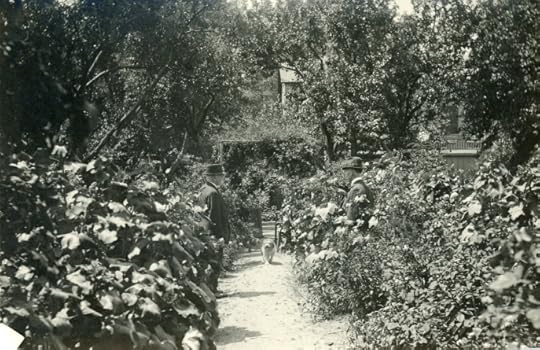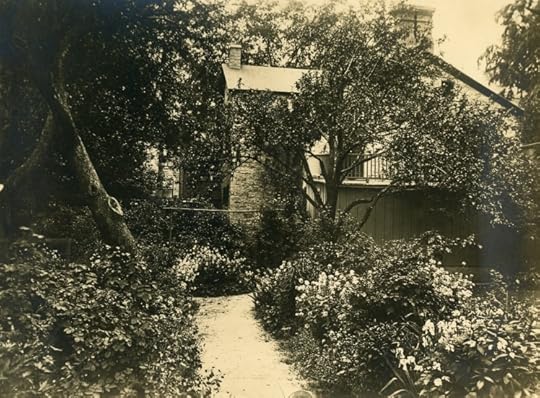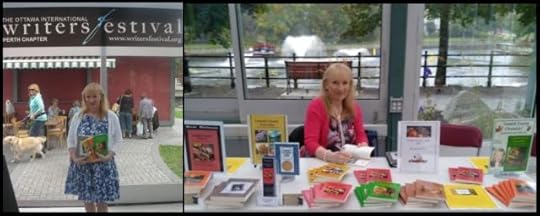Arlene Stafford-Wilson's Blog, page 5
October 24, 2024
Perth’s Haunted Hospital
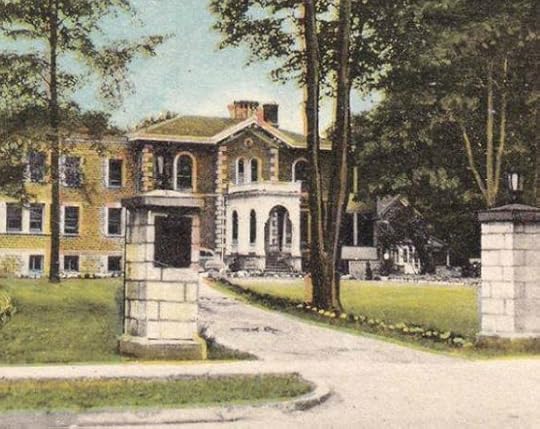
It wasn’t until I worked at the Perth hospital kitchen in the 1970s, that I began hearing stories about the ghosts that haunted their halls at night.
Although I was born in the Great War Memorial Hospital, and years later would attend high school just a block away, no one had ever mentioned the legends surrounding the original owners of the building, or how that family had been cursed.
Curious to find out more, I began to ask around town. Being a small town where everyone knew someone, who knew something; it didn’t take long before I spoke with someone, who knew someone else, who’d seen something unusual at the old hospital. I began to write down some of the stories about the building on Drummond Street that I thought, had always been a hospital. I discovered that it hadn’t started out as a hospital at all.
The story begins with a Judge John Malloch, a prominent citizen of the early days in Perth, who decided in 1858 to build an opulent stone house on Drummond Street. His home had all of the bells and whistles. There were 17 rooms, along with two large halls that were each ten feet wide. There was a solid walnut staircase, a large library, and a fine polished marble mantelpiece. In those days, it was considered by many, to be one of the finest homes in all of Eastern Ontario. The Judge named the home Victoria Hall, for the reigning Queen at that time.
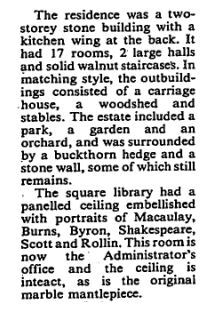
Judge Malloch had ordered many luxurious materials and finishes for his home, some from a distance, and he often became impatient because his building supplies didn’t arrive on time. One of his suppliers had promised delivery on a certain date and the materials did not arrive when needed. This caused a critical delay in construction. Workers were not able to proceed, and the setback cost the Judge a great deal of money. When the material finally arrived, the Judge was so annoyed that he refused to pay.
The supplier became extremely agitated, because even though he admitted that he was very late, he stressed to the Judge that he had delivered the supplies as agreed, so he felt that he should be paid. The supplier argued at length with the Judge, but Malloch stood firm and refused to pay. In the heat of the argument the supplier cursed the Judge. He went on to say that the Judge’s entire family would be cursed for as long as they lived in that house.

Years later, some would say that it was the curse, and some said that it was merely coincidence, that caused the Malloch family members to suffer ill health. Some even succumbed to death prematurely. The old Judge watched as they passed one by one, and he was left all alone in the large stately house.
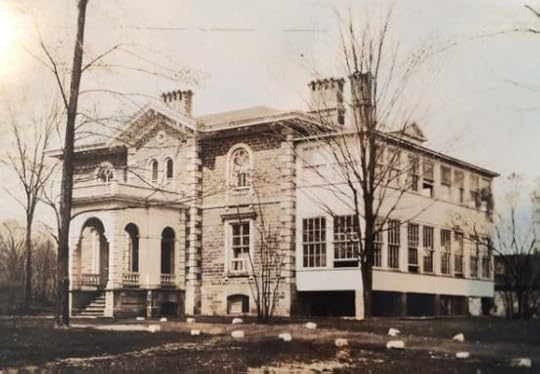
Fifteen years after the house was built, the old Judge died, and the once elegant Victoria Hall was left vacant.
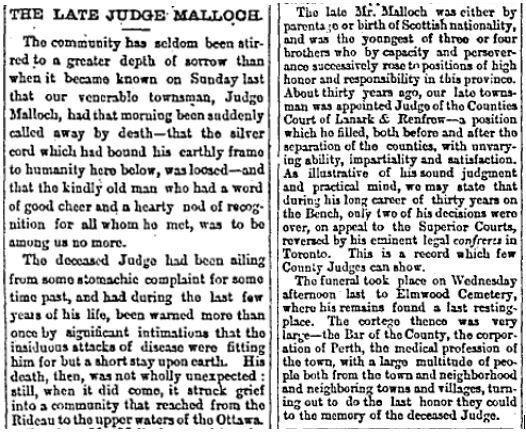
The only time the house was occupied was when distant family members would open the home for the summer season, stay briefly, then leave the house empty and dark for the remainder of the year.
It was during this time, when the house was left vacant, that locals passing by at night often noticed figures walking the halls or staring out the windows. Victoria Hall became known as the Haunted House of Perth.
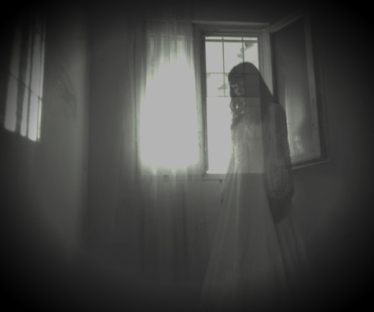
Some said they saw what looked like a thin, sickly. old woman, standing at the window, staring down at Drummond Street below. Others claimed that they saw the ghost of the old white-haired judge, walking up and down the long halls, as if he was searching for something or someone.
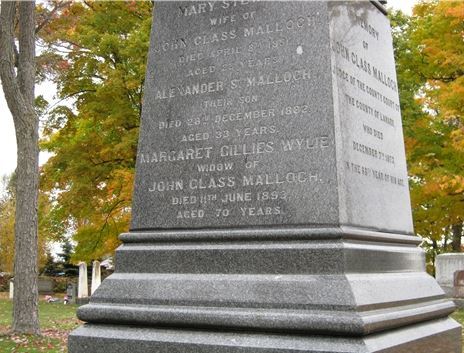
The Perth hospital, in the former Victoria Hall, opened in 1923. On Armistice Day in 1924 the town of Perth dedicated the hospital as a tribute to the men and women who served in World War I, and proclaimed that it would be known as the Great War Memorial Hospital.
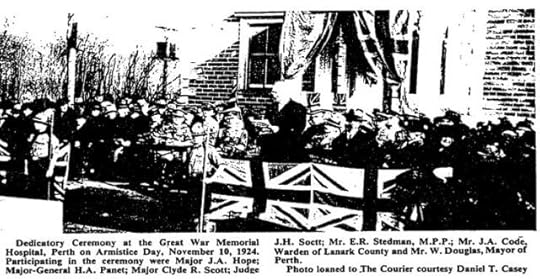
By the time I was hired to work part-time in the hospital kitchen in 1976, there had been many additions, although by that time, the number of beds had been reduced. The provincial Ministry of Health imposed bed closures in the obstetrics ward in 1973 and local mothers had to travel to Smiths Falls to have their babies.
I recall that this was a heated issue at the time, and three years later, when I worked in the kitchen, it was still a topic of great discussion. The other topic, which I overheard many times discussed by the staff, were the ghosts that walked the halls at night.
Being a fairly level-headed person, I was inclined to take the ghost stories with a grain of salt, and went about my usual tasks. I’d been hired part-time to work in the evenings, to deliver trays of food to the patients, after school, and on weekend mornings, to help out with the breakfast preparations.
I recall the first day of work, when I went inside the hospital, and asked one of the staff in the lobby if they could tell me how to get to the kitchen. I got directions, and headed down the elevator to the lower level. When I arrived one of the other part time girls, Darlene Dowdall, took me on a tour of the kitchen, and introduced me to the staff. Dorothy Erwin was the kitchen supervisor. She said she’d be happy to answer any questions, and welcomed me to the kitchen. A few years later, Dorothy’s daughter Ruth, married my brother Roger, but that’s another story.
Next, Darlene brought me over to meet the cook. His name was Wayne Clapp, and he had a quick smile, and was joking around with Leonard ‘Lenny’ Parsons, the dishwasher. Wayne was preparing a beef stew, and he showed me the walk-in refrigerators. I couldn’t believe the size of those things. They were huge.
The next person I met in the kitchen was the baker, and her name was Gladys Thomas. She had a warm personality and very kind eyes. The day I met her she was busy making some vanilla pudding. She had a double-decker bake-oven, mounted on the wall behind her, and an enormous mixer for puddings and cakes.
Leonard Parsons, who I’d met earlier, came breezing by and asked if I’d like to start work by helping him wash some of the pots and pans. Darlene said she’d catch up with me later, and I followed Leonard into the dish-washing room.
Mike, the evening dishwasher, poked his head in the door and with a nervous look on his face, told Leonard that ‘Miss Bosch’ was coming. Leonard explained that Miss Gabriela Bosch was the head of the kitchen, the ‘big’ boss, and she would often drop by for a surprise inspection to make sure that everything was done just so.
He had barely finished his sentence when a very tall, dark-haired lady, wearing a white lab coat, poked her head into the doorway, said hello, and asked how everything was going. She was taller than average, and seemed very serious, and I wondered if that’s why the two men had seemed so nervous.
One of the other part time girls Heather Bell, came in and asked me if I could help her fill up the pop machine in the cafeteria. I recognized Heather from school. There were two Heather Bells, one with dark hair, but this was the blonde one, and she went by Heather ‘N.’ Bell so people would know which was which. Heather had a quick sense of humour, and she was a lot of fun to work with that evening. We joked around as we carted in the cases of pop and slotted them into the machine.
I spotted Bill Farrell coming into the cafeteria from the kitchen and he was holding a mop and pushing a bucket on wheels. He was tall and lanky and had a big smile for everyone. I recognized him from Perth High School, and he came over and introduced himself. He and Heather began joking around about some of the good time they’d had with the kitchen gang since they’d started working there and I knew for sure that there would be some fun times ahead.
Another girl from school Joy Hurren, worked behind the counter in the cafeteria, and she asked me if I’d like to help her fill some dishes with pudding. We spent about an hour doing that, and when we finished, we began to shut everything down for the night.
As we turned off the lights in the cafeteria, I heard an odd sound like someone moaning coming from inside the kitchen, but when I pushed the door open there was no one there. Joy just shook her head and seemed to think nothing of it; so, neither did I.
On my second night I worked with Joy’s younger sister Jennifer Hurren. She and I had been assigned the job of delivering supper to all of the patients. There were huge metal racks on wheels called carriers and every six inches or so there was a slot that held a tray of food.
The trays were already set with the evening meals. The dinner plates each had a metal cover to keep the food hot, and some of the trays had pots of tea or glasses of tomato juice or apple juice. Ethel Scott was working that evening putting the meals together. I recognized her because I went to school with her daughters, Judy, Thelma, and Patsy. Ethel was checking to make sure that the meals on the trays matched what the patient had checked off on their order slip.
Once we’d loaded the trays on the carrier, Jennifer and I rode up in the elevator, and stopped on the first floor. The big metal carrier was on wheels, so we pushed it along the hallway and stopped by each room. We made sure to check the slip of paper and match the name with the nameplate on the bed and then we set the tray down. Some of the patients were sleeping, but most were awake and happy to see us, and we chatted for a couple of minutes and then went onto the next room. There was one lady at the end of the hall who didn’t get a tray that night. Her room number wasn’t on the list. I thought to myself that she must have already eaten her supper earlier in the evening.
As the months passed by, I realized that the staff members in the hospital kitchen were a great bunch to work with. There were many jokes shared and stories told while we worked, and every so often someone would mention the ghosts that had been seen in the halls over the years. Well, I’d been up and down those halls many, many, months, and the only folks that I’d seen other than the nurses, were from the Hospital Auxiliary.
The ladies of the Hospital Auxiliary were a dedicated group and sometimes we’d see them in the halls. They’d be upstairs on the floors late at night delivering evening snacks to the patients. They called it the ‘Tea and Toast Brigade’ and brought around hot buttered toast with jam or jelly, and tea or juice to the patients, to provide a little late-night nourishment. Along with offering some cheer and a snack these ladies raised a tremendous amount of money for the hospital. They ran a little gift shop on site, and were also in charge of the Candy Stripers – young girls who volunteered to help out with small jobs around the hospital.
I saw quite a few of the ladies from the Hospital Auxiliary like Miss N. Burke, Mrs. Vi Wilson, Mrs. L. Crothers, Mrs. B Watson, Mrs. K. Frizell, Mrs. S. Folkard, Mrs. E. Rilley, Primrose Paruboczy, Harriet Halliday, and Mary McDougall. They were tireless workers, and it was very clear that they really cared about the patients and the hospital.
I also saw many of the local doctors while delivering the trays of food each evening. Many of them looked exhausted as they made their rounds, but they were always friendly and had a few kind words for us as we wheeled our food carrier down the halls. I remember Dr. Holmes and Dr. David Craig tending to their patients; and also Dr. J.A. Kidd, Dr. R. McLean and Dr. Tweedie.

We walked those halls on each floor of the hospital two or three nights each week, wheeling our meal carrier up and down, unloading the trays, chatting with the patients and the hard-working nurses. We dropped the trays off, came back later, picked up the empty trays, and brought them down to the kitchen.
I worked evenings in the hospital kitchen for almost two years. I heard many accounts during my time of staff members seeing apparitions. I thought that they must be imagining things, because I’d walked those halls at night countless times, I never encountered any ghosts at the GWM Hospital.
After graduating from PDCI, I worked two more months at the hospital kitchen, then headed off to college. I treasured the friendships formed there, and the building itself was impressive; particularly the original section of Victoria Hall, which at that time was used for administration. Being a keen student of history, it was interesting to learn about the early days, and also the many expansions and transitions that had taken place over the years.
On my last shift, there was a little gathering in the kitchen, and everyone wished me good luck in college. We loaded the trays in the carrier one last time, and headed into the elevator, and up to the second floor to deliver the evening meals. As we made our way to the end of the floor and emptied the carrier, a nurse walked by, and I stopped her, and asked a question that had been on my mind since I started working there.
“Sorry to bother you, but I’ve always wondered why the lady in the last room on the right never eats her supper at the same time as the other patients?”
The nurse gave me a puzzled look and said, “That’s just a utility room. We use it for storage. There hasn’t been a patient in there for years.”
I felt the blood drain from my face and a shiver ran down my spine, as I looked at her in disbelief, and then looked back down the hall toward the room. Was it possible that I had imagined the pale, slender lady with the snow-white hair, in the faded blue robe? Maybe she was from one of the other rooms …but why did she stand in front of the room at the end of the hall each evening?
The girl I was working with said, “Come on! We’ve got two more floors of meals to deliver tonight.”
The nurse had already started walking back to her station, and my co-worker was pulling the carrier down the hall toward the elevator. I finished my shift that evening, and hung up my smock in the change room for the last time.
I left out the side door that last night as usual, and headed up the curved pathway. Once I reached the sidewalk on Drummond Street, I looked back at the building where I’d worked the past two years. Suddenly it looked different, almost eerie, and I recalled what the nurse had said that night.
Who was that small, frail lady with the snow-white hair that I’d seen so many times? She never ate supper with the others. We never brought her a dinner tray. Was it my imagination? Was it just a coincidence?
Or, perhaps, this really was the ‘Haunted House of Perth’.

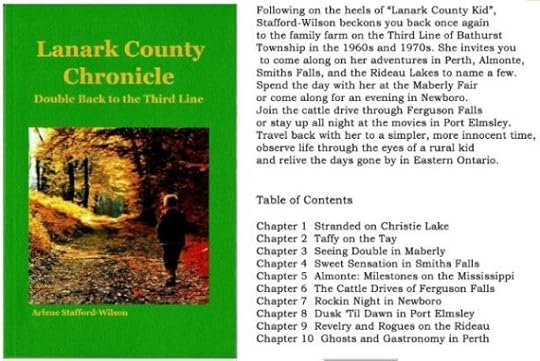

Arlene Stafford-Wilson
Honorary Life Member, Lanark County Genealogical SocietyLanark County Pioneer Families Humanitarian AwardFrancois Bregha Storyteller AwardMember, Association of Professional GenealogistsAuthor of : “Lanark County Kitchen: A Maple Legacy from Tree to Table”, “Lanark County Christmas”, “Lanark County Comfort”, “Lanark County Collection”, “Lanark County Calling”, “Lanark County Classics”, “Lanark County Connections”, “Lanark County Calendar”, “Lanark County Chronicle”, “Lanark County Kid”, & “Recipes & RecollectionsFall 2024:“Lanark County Classrooms: Remembering Our School Days”
“A delightful collection of stories and memories from former students and teachers, spanning the 1940s through the 1980s, from small-town, village, and one-room school-houses across Lanark County.”
http://www.staffordwilson.comOctober 23, 2024
Rideau Ferry’s Dark Legend

The legend of the notorious John Oliver begins in 1816 when he and his family settled on the south shore, on Lot 21, Conc. 5 of Elmsley Township, and John began to operate a ferry service on the Rideau Lakes. Over the years there were stories of travellers who went missing, of bones found under a house, tales of fighting among neighbours, and of a grisly murder.
Oliver’s Ferry
Back then, early surveyors reported a distance of about 450-500 feet, at the narrowist section for crossing the Rideau Lake, so anyone traveling to Perth had to pay Oliver to cross from one side to the other if they didn’t own a boat. This community today is known as Rideau Ferry, but at that time, because of John’s thriving business, it was known as Oliver’s Ferry.
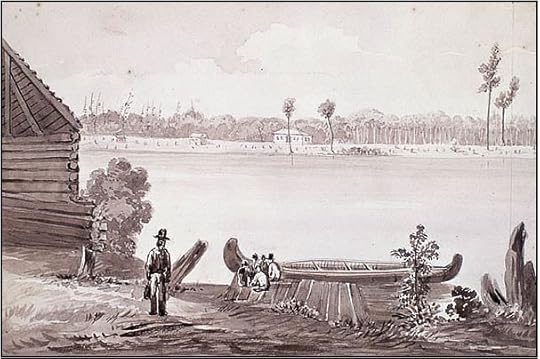
Oliver’s Ferry, August 20, 1830, by James Pattison Cockburn, Library and Archives Canada
Travellers Disappeared
John Oliver’s ferry, a rough wooden raft, was a link to the roads leading from Brockville and Perth. John had a most unusual habit. He refused to transport travellers across Rideau Lake to the other side after dark, and always offered to accommodate them at his home overnight and then transport them the following morning.
His neighbours claimed that they seldom saw the travellers the next day. When people in the area asked about the travellers John stated that, “They went on their way at first light. You must have been asleep”. It was said that a number of these travellers who stayed overnight at John’s house never arrived at their destination.

John’s Suicide
When local minister, Rev. William Bell visited Oliver’s Ferry on his way to Perth in 1817, he later noted in his diary, that John Oliver, “appeared to have a somewhat unstable personality”. This observation proved to be true when news came of John’s death by suicide, after he shot himself in 1821.
William Oliver
Takes Over
After his father’s sudden death, William took over the ferry business.
Did John in fact take his own life, or did his son, William, who was said to be both violent and ambitious, cause his father’s death?
Stories of William’s temper were well known in the area and stories suggested that he continued his father’s ghastly habit of killing travellers, stealing their possessions, dismembing their bodies and hiding the remains under the floorboards of the Oliver house.
William was also known to have frequent and violent arguments with his neighbours, and it was said that almost everyone disliked him. He often had disagreements with his neighbours, some of which turned violent. He was also known to pursue other men’s wives, an in particular the wife of William McLean who lived across the river. His habit of being a womanizer did not increase his popularity in the community around the Rideau Lakes.
On a hot summer’s day in July of 1842, his violent nature rose to the surface again when the neighbour’s cattle, from the Toomy farm, were found trespassing on Oliver’s property. William headed straight to the Toomy’s place, confronted the two Toomy brothers, and punched one of them.
“The Perth Courier”, in its July 26, 1842 edition reported that the Toomys retreated to their house and that Oliver followed them there. One of the Toomys grabbed a loaded gun and told Oliver to get off their property. As Oliver tried to wrestle the gun from Toomy, the gun discharged, shooting Oliver through the heart. He was killed instantly.
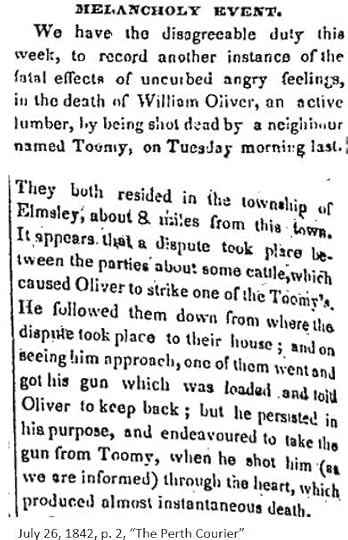
Rev. William Bell of Perth stated, “The tragical death of William Oliver, at the Rideau Ferry on the 19th, creating at this time a universal thrill of horror. It was dreadful to think of a man so profanely wicked as he was, being sent into eternity in a moment.”
Word spread quickly through the county, and on July 20, Peter Sweeney, Lockmaster at Jones Falls, noted in his diary “I heard that Mr. Oliver was shot by a neighbour at Oliver’s Ferry.”
“On Wednesday morning, July 20, 1842, an inquest was held upon the body, before W.P. Loucke, Esq., Coroner, when the Jury returned a verdict of Manslaughter against William and John Toomy, the evidence being contradictory as to which of the brothers had committed the deed. We understand they were sent to Brockville jail, to await their trial.”
“The Perth Courier”, July 26, 1842, p. 2
The Toomy brothers were jailed and both later convicted of manslaughter.

Oliver’s Ferry – Rideau Lake, 1834 – Archives of Ontario
One local legend passed down through the generations states that when the Oliver family’s buildings were torn down to make way for the new bridge built across the narrows in 1874, human bones were found both inside of the walls and under the floor boards.

Oliver’s Ferry 1828 looking south This shows the south shore where the Oliver family’s house was located (in red)
The bottom shows the north shore and the road to Perth. from: 1828, Scottish Records Office
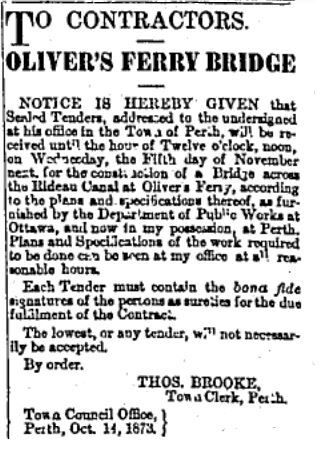
“The Perth Courier”, October 17, 1873, p. 4
Human Skeleton
Discovered
In 1873, when bids were being submitted on the contract to build a bridge to replace the ferry there was an alarming article in the local newspapers stating that there was:
“a discovery of a human skeleton under the platform of a house
near the wharf that was undergoing repairs.”
After the bridge was completed in 1874, there was no longer a need for a ferry service.
Both the original ferryman, John Oliver, and his son, William were gone – the father, by a self-inflicted gunshot, and the son, shot through the heart by his neighbour.

The legend of Oliver’s Ferry is one that’s been passed along for over 200 years, since 1821, and the unsettling death of John Oliver. His son William’s tragic demise adds to the mystery and intrigue of this fascinating tale!

Who were the travellers staying overnight at the Oliver’s home, and were they ever seen again?
Did authorities identify the human skeletons found under the wharf when they were building the Rideau Ferry bridge?
This fascinating story of the Oliver family remains one of Rideau Ferry’s dark legends!

Arlene Stafford-Wilson
Honorary Life Member, Lanark County Genealogical Society
Lanark County Pioneer Families Humanitarian Award
Francois Bregha Storyteller Award
Member, Association of Professional Genealogists
Author of : “Lanark County Kitchen: A Maple Legacy from Tree to Table”, “Lanark County Christmas”, “Lanark County Comfort”, “Lanark County Collection”, “Lanark County Calling”, “Lanark County Classics”, “Lanark County Connections”, “Lanark County Calendar”, “Lanark County Chronicle”, “Lanark County Kid”, & “Recipes & Recollections”.
“Revelry and Rogues on the Rideau”, a story in “Lanark County Chronicle”, tells the tales of John Oliver, and of Coutts House and the Rideau Ferry Inn, and of Al Capone’s rum-running days, and a secret tunnel built so he and his men could escape from their hideaway and cleverly evade the local police.
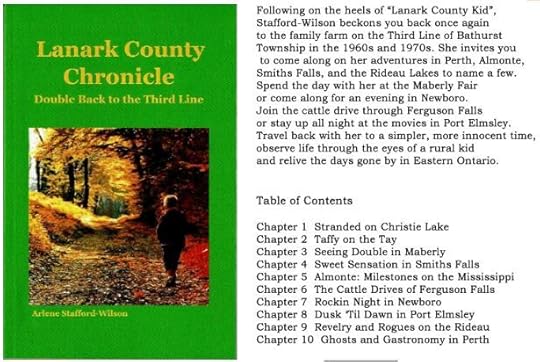
Fall 2024
“Lanark County Classrooms: Remembering Our School Days”
“A delightful collection of stories from former students and teachers spanning the 1940s – 1980s, from small-town, village, and the rural one-room schools across Lanark County.”

October 21, 2024
Ottawa Valley “Mayflower” Sinking
On a cold and stormy November night, in 1912, the “Mayflower” sank into the frigid waters near Barry’s Bay. There were 12 people aboard, including crew members, and the only survivors were three travelling salesmen from Ottawa. The brave young salesmen clung onto a wooden coffin, part of the ship’s cargo, which stayed afloat, and they made it to a small island, and were rescued the following day. The other eight souls onboard perished.
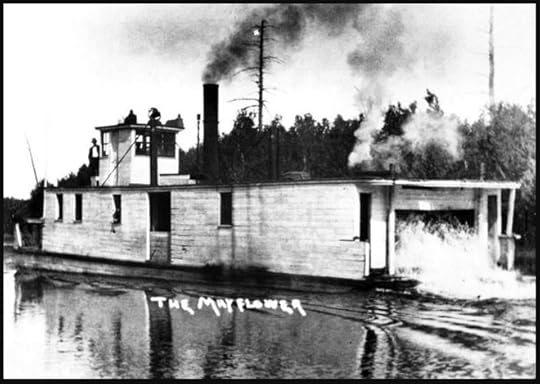
The Ship
The “Mayflower” was built in 1904, from oak, hemlock, and local white pine, on the shore, beside the Hudson Hotel in Combermere, Ontario, by Napoleon Tessier, of Hull, Quebec, for two brothers, John Charles Hudson and Henry Edwin Hudson. She had a length of 77′, a breadth of 18′, a depth of 4′ and height of 20′, and was powered by two steam engines. The “Mayflower” was nearly a flat-bottom boat, designed for navigating the shallow waters on the Madawaska River. A single rear paddle wheel was set into the stern and had twelve paddles. By 1912, the eight year old boat had not been well maintained, was not seaworthy, and was not certified for safe operation.
The “Mayflower” was used for transporting freight, mail, and also offered a limited passenger service between Barry’s Bay and Combermere, also Palmer Rapids, on the Madawaska River.
The crew of three included: Owner and Captain John Hudson, the Pilot and Wheelsman – Aaron Parcher, and the young Fireman and Engineer, Tom Delaney.
Because of very low level running-lights this ship was not designed to be on the water after dark. What was supposed to be the final run of the season took place earlier that same day. The ill-fated voyage would never have left the harbour if it wasn’t for the local Radcliffe Township Councillor, William Boehme, who persuaded Captain Hudson to make one final trip that evening to transport the corpse and coffin of a relative – John ‘Herman’ Brown, who had died five days earlier in Saskachewan, and had arrived that day by rail.
The 12 People Onboard
On Tuesday evening, November 12, at 7:00 p.m., the Mayflower left the harbour at Barry’s Bay. It was a bone-chilling night, with high winds, and blowing snow. This journey, at the usual speed of 5 – 7 miles per hour, normally took three hours.
There were twelve people including the crew, plus John Herman Brown’s casket onboard the boat when she left Barry’s Bay.
“The Mayflower left Barry’s Bay in the midst of one of the howling storms for which the month of November is noted.”
“A howling wind was sweeping down over the river, which is nearly a mile wide at the point where the boat sprang a leak, and the water was lashing the sides of the ill-fated boat with a vengeance. All around was black. Not a light could be seen anywhere. The boat began to lurch a little, a little more, and then terribly; then the old coal oil lamps went out by being crashed to the floor, and in a few minutes, when all was in darkness, the boat keeled over broadside and sank suddenly, throwing passengers, crew, freight and all, of which there was a good deal aboard, and machinery, into the icy water.”
Nov. 14, 1912, p. 3, “The Berlin (Kitchener) News Record”
3 Life Jackets
“On the deck, Captain John Hudson handed out the only three life jackets on board. It is said that Elizabeth McWhirter, age 83, refused to take one, expressing her desire to see a young person survive the ordeal. The captain ordered that the casket bearing John Herman Brown’s body be thrown overboard. Then he ran down towards the engine room where Engineer, Tom Delaney, was still at his post. With the ship keeling over, the passengers either jumped or were washed into the icy waters by the high waves which crashed against the hull.”
Nov. 12, 2012,”The Pembroke Observer”
The Crew
The Mayflower had a crew of three:
Captain John Hudson
Capain John Hudson, owner of the ship, Mayflower, native of Brudenell, Renfrew County, age 46, was also Reeve of Radcliffe Township, and well respected in the community of Combermere. He was the son of John Hudson and Elizabeth Dennison, and at age 38, in 1904, he married Margaret ‘Maggie’ Mahon, in the town of Renfrew. In 1905, their only child, John ‘Edwin’ Hudson was born.
Aaron Parcher, Pilot
Aaron Parcher was the son of Cyrus Parcher and Mary Ann Knight. He was 28 years old at the time of the wreck, and was the Pilot/Wheelsman onboard the “Mayflower”. Five years earlier, at age 23, he’d married Maud McLean, and they had two young sons, Gordon, age 4, and Allen, age 2.
Thomas Delaney, Engineer
Little is known about Delaney, who was the Fireman on the “Mayflower”. “When the boat began to sink, he and passenger, William Murphy, clung onto the flagpole, according to Gordon Peverley, one of the survivors”
“As soon as Aaron Parcher realized there was danger he put on a life belt, which hung in the wheelhouse and hollered that he inteded to try and make for his father’s landing. He said he could get help there. I could see the flagpole of the boat sticking above water, and Delaney, the Fireman, clinging to it. We tried to get towards Delaney and Murphy who was also holding the flagpole. We got near to them and told them to make an effort to reach us. They were too exhausted to keep their hold any longer, gave up hope, and sank.”
Nov. 15, 1912, p. 2, “The Ottawa Citizen”
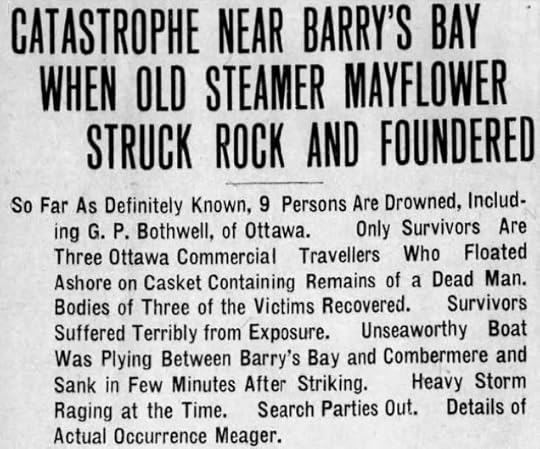
November 14, 1912, p. 1, “The Ottawa Citizen”

Google map – left section showing Barry’s Bay, Madawaska River
“The seventy-foot steamer, Mayflower, sank ten minutes after striking a rock in the river, about three miles from Barry’s Bay, en route to Combermere, a distance of sixteen miles.”
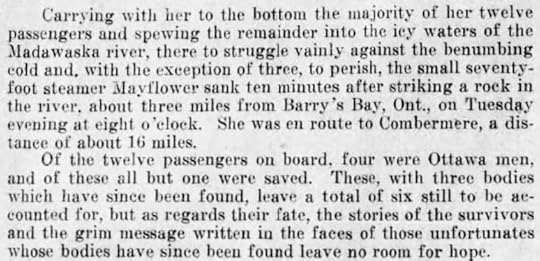
Nov. 14, 1912, p. 1, “The Ottawa Citizen”
“We were sitting in the engine room when suddenly the water came in
and the boat sank within fifteen seconds.”
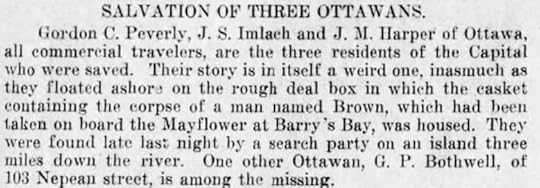
They clung to the casket, the only thing left floating, and made their way to one of the two islands in Kamaniskeg Lake.
“They clung onto the floating casket and set out to the island about 9:00 p.m. about 500 feet away”
Herman Brown
The body in the casket was that of John ‘Herman’ Brown (Braun), unmarried, age 29, (1882-1912), son of Herman Brown (Braun) and Augusta Groskalas. He died on November 7th, of an accidental gunshot wound in Yorkton, Saskatchewan. He was being transported back home, to the village of Schutt, in Renfrew County, his final resting place.
Robert Pachal
Robert Pachal, age 25, born in Ukraine, son of Friedrich Pachal and Wilhelmine Scheler, accompanied the body of Herman Brown, from Saskatchewan to Ontario on the train. Robert was married to Martha Brown, and they had a two year old daughter, Annie, at the time of his death.
“Robert Pachal’s body was found this morning on the shore of the island where the three survivors were found. He came from Yorkton, Saskatchewan with the body of his brother-in-law, Herman Brown, 30 years old, whose remains he was taking to Combermere.”
Nov. 14, 1912, p. 1, “The Ottawa Citizen”
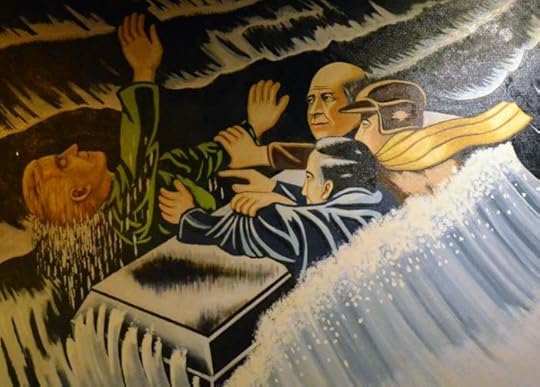
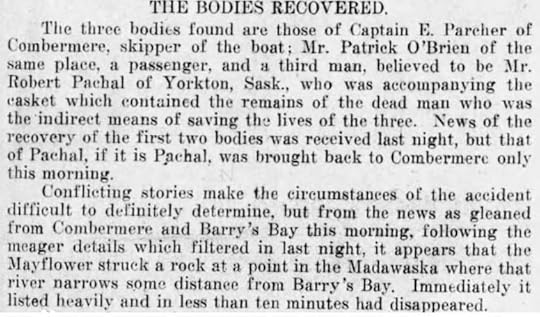
Nov. 14, 1912, p. 1, “The Ottawa Citizen”
“During yesterday’s examination the divers explored the bottom for 100 feet on either side of the steamer, then continued their search for Bothwell’s body.”
Nov. 18, 1912, p. 12, “The Ottawa Citizen”
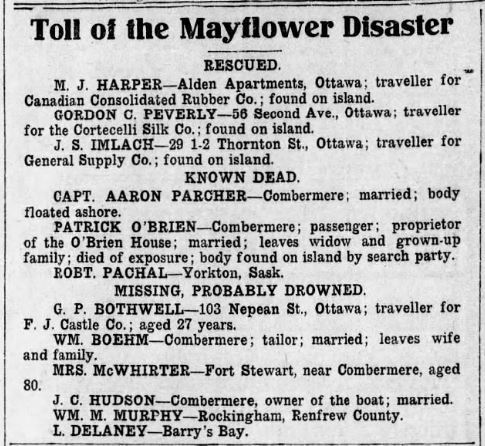
Nov. 14, 1912, p. 1, “The Ottawa Citizen”
Only 3 Survivors:
Harper, Peverly, and Imlach
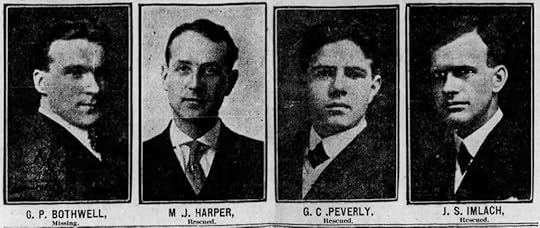
Nov. 14, 1912, p. 1, “The Ottawa Citizen”

Nov. 14, 1912, p. 1, “The Ottawa Citizen”
How Were They Found?
“As hope began to fade, the 16-year-old son of Silas Parcher, and brother of the crew-member, Aaron Parcher, was walking near the shore with his gun, hunting partridges. He saw a body floating near, which looked like that of his brother. The boy hurried back to his father, who canoed out to find that the body was that of his son. Over on the shore of the island, Mr. Parcher saw what looked like somebody waving something white. He at once hurried to Combermere, six miles away, and there learned that the “Mayflower” was missing, and told what he had seen on the island”
November 18, 1912, p. 12, “The Ottawa Citizen”
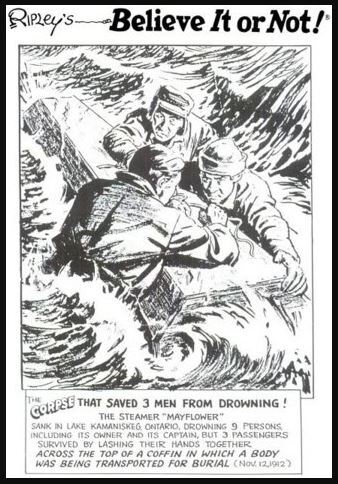 Ripley’s “Believe It or Not”
Ripley’s “Believe It or Not”The Rescue
Gordon Peverley, survivor, described the rescue: “The day wore on. Each tried to cheer the other up. Close at hand lay the body of Mr. O’Brien, and the coffin with the corpse of Herman Brown in it. Mr. Harper was the only one who had an overcoat and we shared it as best we could. All the time we kept asking one another what our opinion was about the fate of George Bothwell. We dared not believe he had perished. When darkness came we tried to keep our hopes buoyant by telling one another that the fire which we took care to keep going would attract the attention of the captain of a passing boat. It must have been nearly nine o’clock when we first heard the whistle of a steamer which we found later to be the “Ruby”. About 20 minutes later we heard the swish of oars and a chorus of voices say, “Hallo boys! Where are you, and how are you?”
Four More Bodies Found
“Word was received last night from Barry’s Bay that four bodies were found together, and all were either in or near the boat, an indication that it went down so quickly as to afford practically no opportunity of escape for most of the passengers.
The bodies located yesterday were those of Elizabeth (Storie) McWhirter, of Fort Stewart, Councillor, William Boehme, of Combermere, Engineer, Tom Delaney, of Barry’s Bay, and Captain John Hudson, of Cobermere. The first three bodies were found in the cabin of the Mayflower, where the victims had been drowned like rats in a trap. That of Hudson was some eight feet away from the bow of the boat.”
November 18, 1912, p. 12, “The Ottawa Citizen”

Nov. 14, 1912, p. 1, “The Ottawa Citizen”
William Boehme
William Boehme, born in Brandenburg, Germany in 1853, was a Tailor by trade. At age 32, he married Louise Frederick, in Wilberforce Township, and they had eight children: William (1897-1897) died in infancy, Annie (Dustin) (1888-1969), Herman (1890-1955), William F. (1891-1918), Charles (1892-1892), Hubert Arthur (1894-1894), Female not named (1896-1896), Female not named (1897-1897), only three survived to adulthood.
It was later reported that it was William Boehme, a local Township Councillor, who persuaded Captain John Hudson to embark on one last trip for the season, at 7:00 p.m., to pick up the body of his relative, John ‘Herman’ Brown, from the Grand Trunk Railway station in Barry’s Bay, to be transported home and buried in the village of Schutt before winter. Brown died as a result of a gun accident in Yorkton, Saskatchewan.
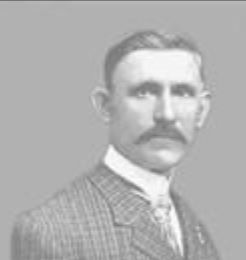
Councillor, William Boehme
Three of the men on the “Mayflower” were politicians.
Captain John Hudson was Reeve of Radcliffe Township, and William Boehme and Paddy O’Brien were both Township Councillors.
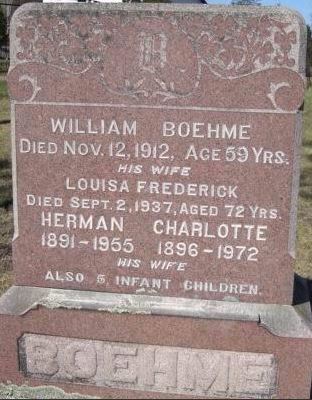
Combermere Methodist Cemetery, Renfrew County
“At the wharf were the wives and families of Paddy O’Brien and William Boehme. They inquired anxiously for news of their loved ones. On hearing the worst they turned away to their homes shaking with sobs. Both Mr. Boehme and Mr. O’Brien were well respected in the village where they lived and both were members of the village council. The late Captain Hudson was the Reeve. All were married men with families.”
November 15, 1912, p. 1, “The Ottawa Citizen”
George H. Bothwell
George Bothwell’s body was the last to be recovered, and was not found until the spring of 1913, in April. His remains were found on the rocks on the east shore of the river, opposite to where the wreck occurred.
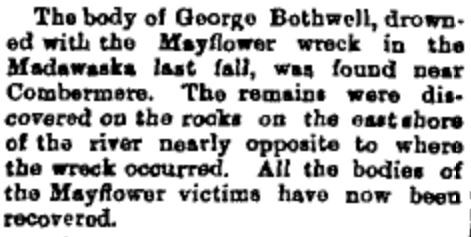
April 25, 1913, p. 8, “The Perth Courier”
George Bothwell, age 27, lived at 103 Nepean Street, and came to Ottawa in 1906 from Aberdeen, Scotland. In 1907 he began working as a Commercial Traveller for the F.J. Castle Company Ltd., a wholesale grocer. He had a regular route of the Barry’s Bay district on behalf of his company. He was not married.
Death Notice: BOTHWELL, George H., drowned on the steamer, “Mayflower”, on the Madawaska River on 12th Nov. 1912, body recovered Monday, April 21st, 1913. Masonic and semi-military funeral will be held on Thursday, 24th inst., at 2:30 p.m. from Roger’s and Burney’s Chapel at 283 Laurier Ave. W., Ottawa.
Elizabeth (Storie) McWhirter
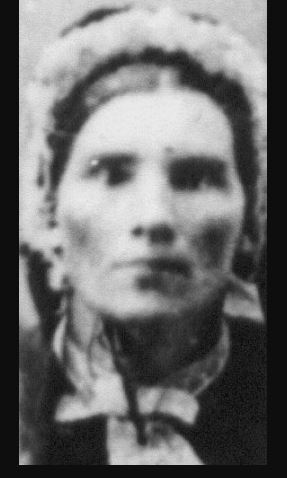
Elizabeth (Storie) McWhirter, the only woman aboard, was the daughter of Scottish immigrant William Storie, Kirkton, Scotland, and Mary Ann McQueen of Kilbirnie, Scotland. Elizabeth and her husband, William, (he died in 1911), had 8 children: Thomas Alexander McWhirter (1854-1935), Jannett McWhirter (1856-1881), Mary McWhirter (1859-1946), Catherine ‘Kitty’ McWhirter (1861-1953), Agnes McWhirter (1862-1958), William Joseph McWhirter (1864-1942), Elizabeth ‘Lizzie’ Stewart McWhirter (1869-1962), and Robert McWhirter (1873-1875)
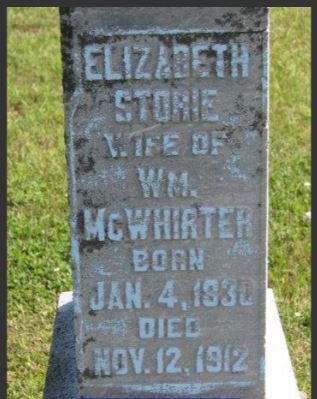
Patrick ‘Paddy’ O’Brien
Paddy O’Brien, son of John O’Brien and Bridget McNamara, drowned at age 60, (1853-1912), he owned one of two hotels located in Barry’s Bay – O’Brien House Hotel.
Born in Pakenham, Lanark County, Ontario, he married Matilda ‘Tilley’ Price, and they had a large family: Maggie, Charles, Howie, Matilda, Patrick, Mildred, Sarah, Walter, and Clara.
At the time of his drowning, most of the children were grown, and their youngest daughter, Clara, was 18.
“Mr. O’Brien made a great effort to reach shore, he was in the water swimming for upwards of two hours, but a few minutes after reaching the shore, died from exhaustion.”
November 14, 1912, p. 2, “The Ottawa Journal”
After Paddy’s death, his wife, Tilley, continued to run the O’Brien Hotel, with the help of their sons, Howie and Walter.
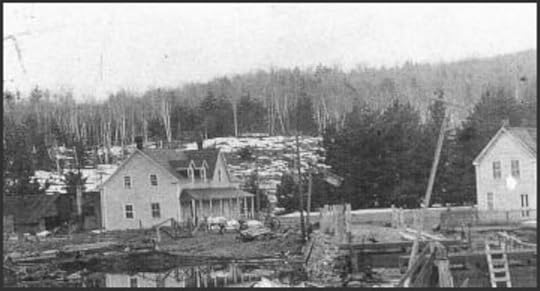
O’Brien House Hotel – 1911
The O’Brien House Hotel was established circa 1880’s, was one of only two hotels in the area, along with Hudson House. The O’Brien Hotel had the first telephone exchange in the area and was used to communicate information to Barry’s Bay in the days after the sinking of the Mayflower.

Patrick O’Brien and his wife, Matilda Price O’Brien – Combermere Methodist Cemetery
William Murphy
William Murphy, Irish, age 55, was not scheduled to be on the “Mayflower” on that stormy November night. He was a labourer, and unmarried, and it was only by chance that he decided to go on that fateful voyage.
The Survivors:
Joseph Harper
Joseph Harper, son of Joseph Harper and Matilda Elliott, was born in Forrester Falls, in 1884, and at the time of the shipwreck, at age 27, he was employed with the Dominion Rubber Company in Ottawa, as a Commercial Traveler. He was still a newlywed, having married a Smiths Falls girl, Nellie Ferguson, in June of 1911. They moved to Ottawa that same year, to 207 O’Connor Street. He was employed with the Dominion Rubber Company until his retirement in 1955, and then moved to Almonte. Joe and Nellie had four children: John, George, Betty (Guselle), and Noreen (MacDonald), and at the time of his death in 1957, they also had 11 grandchildren. Joe is buried at the Auld Kirk Cemetery in Almonte, Ontario.
John Imlach
John Stevenson Imlach, born in Carleton Place, Ontario, was one of the three survivors of the wreck of the Mayflower. At that time, in November of 1912, at age 27, he was still a bachelor, living with his parents, at 29 Thornton Avenue, Ottawa. He was a machinist and traveling salesman for the General Supply Company, Ottawa. His brother, Andrew Imlach, was founder and proprietor of the Victoria Garage Company.
“When news arrived of the disaster, Andy Imlach, immediately rushed to Thornton Street and cut the telephone wires so that no news could come through to his mother, until they were certain of his brother’s fate. Not ’till he was in possession of certain intelligence of his brother’s safety that he let his mother know there had been any danger.”
Nov. 14, 1912, p. 2, “The Ottawa Journal”
Four years after the disaster, in the summer of 1916, John Imlach, age 31, fell in love, and married Evelyn Louise May Ready, a schoolteacher. In 1926, they had a daughter, Shirley Isobel Imlach.
Gordon Peverley
Gordon Peverley, son of Clavering Peverley and Jenny Thompson, was born in Quebec in 1884, and was married at age 21, in Montreal, on June 20, 1906, to Mabel Herbert. At the time of the shipwreck, Gordon was 28, and he and his wife lived at 56 Second Avenue, Ottawa, with their two children, Gordon, their eldest, age five years, and baby Howard, who was just five months old. Gordon was a traveling salesman for the General Supply Company, and was doing his usual sales calls in the Barry’s Bay area. When his wife first heard about the Mayflower, it was reported that “all hands were lost”, but she refused to believe that Gordon had perished, insisting that he was a powerful swimmer. She was overjoyed when she heard the news that he had survived. At age 34, Gordon and his family moved to Halifax, where he continued his career in sales. He passed away in 1955, age 70, in Cape Breton. Gordon and Mabel had six children, four who survived to adulthood: Gordon (1907-1989), Harold (1912-2000), Dora (MacDonald) (1915-2013), John (1917-1917 born premature), and Isabelle (Spencer) (1920-1993).
The Inquiry
There were so many reasons that the “Mayflower” should not have taken that final trip of the 1912 season. None of the crew members were licensed, and none had any formal training or certification papers to perform their duties. There were rumours and gossip after the disaster that members of the crew had been drinking at a local hotel before commencing the journey. The “Mayflower” had not been inspected, and was not cleared for operations to transport freight nor passengers. There were only three life-jackets onboard, and no lifeboat. The ship was not equipped with lights sufficient for an evening voyage on a dark November night. There were also reports that it was not the first time the “Mayflower” went down in the waters of the Madawaska River.

Dec. 31, 1912, p. 1, “The Ottawa Citizen”
The official inquiry blamed the government department for neglecting to inspect the ship.
Mr. R.A. Pringle was the Commissioner appointed by the government to head the inquiry into the “Mayflower” wreck. The Minister of Marine and Fisheries, Hon., J.D. Hasen, asked that they “pursue every possible course to discover where the fault lies and to ascertain why the ship was permitted to run without having complied with the law.” Evidence showed that the ship had no qualified ‘Master in charge’, and that it had no life-boat. Although the total number of ships subject to inspection is unquestionably large, “it is the duty of the government inspectors to see that the small percentage that fail to pass are prevented from running until there is the fullest compliance with the Shipping Act.”
The Tribute
The communities of Barry’s Bay and Combermere marked the 100th anniversary of the sinking by unveiling two new plaques in 2012,- one at the Barry’s Bay wharf, and a second plaque at the Combermere dock, paying tribute to the passengers and crew.
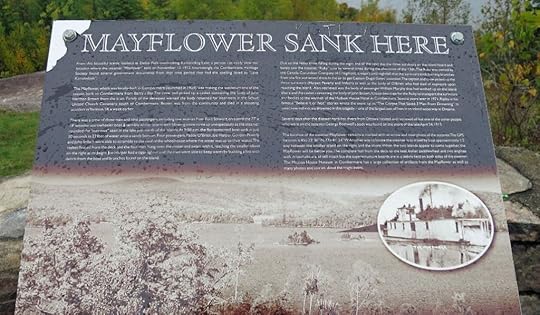
Close-up view of the inscription:

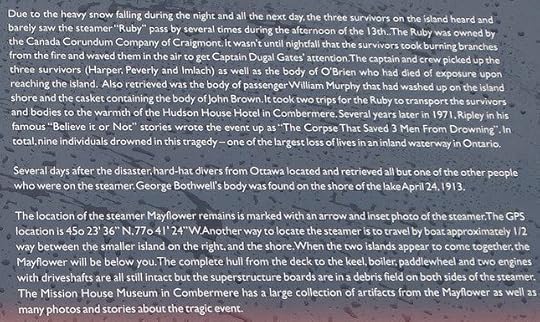
Final Note:
The sinking of the stern-wheeler, “Mayflower”, marked the worst inland maritime disaster in Canadian history of that time. Today, the story of the “Mayflower”, is a legendary part of the history of the Ottawa Valley.
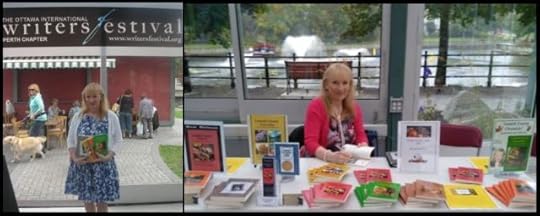
Arlene Stafford-Wilson
Honorary Life Member, Lanark County Genealogical Society
Lanark County Pioneer Families Humanitarian Award
Francois Bregha Storyteller Award
Member, Association of Professional Genealogists
Author of: “Lanark County Kitchen: A Maple Legacy from Tree to Table”, “Lanark County Christmas”, “Lanark County Comfort”, “Lanark County Collection”, “Lanark County Calling”, “Lanark County Classics”, “Lanark County Connections”, “Lanark County Calendar”, “Lanark County Chronicle”, “Lanark County Kid”, & “Recipes & Recollections”
New for Fall of 2024:
“Lanark County Classrooms: Remembering Our School Days”
“A delightful collection of stories and memories from former teachers and students, spanning the 1940s through the 1980s, in small town, village, and the rural one-room schools across Lanark County”

Mill Street Books – Signing
It’s not often that we have warm sunny days late in October, but on our recent trip to Almonte the sun shone brightly against a backdrop of colourful leaves, the kind of bright maples that remind us we’re in the heart of Lanark County, the Maple Syrup Capital of Ontario.
Along with its rich history, Almonte has become famous for its delightful streetscapes, and the film industry has certainly taken notice in the past decade with many warm and wonderful Hallmark Christmas movies filmed on these historic streets.
While reminders of the town’s history can be seen from almost every vantage point, our reason for the visit was a book signing for, “Lanark County Classrooms: Remembering Our School Days”, at the charming book shop frequented by residents and visitors alike – Mill Street Books.
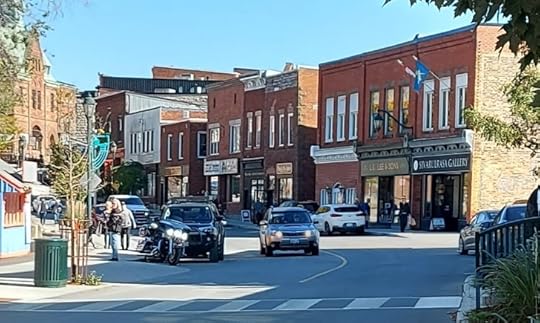
Mill Street as it curves along the nearby Mississippi River
It would be nearly impossible to visit Almonte without encountering some of the historic stone structures, like this old stone mill, built by the prominent Rosamond family.
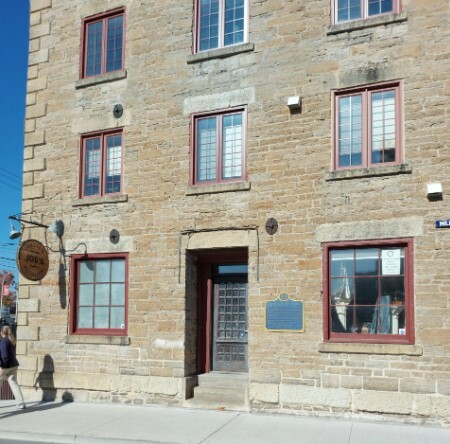
Inscription on plaque:
“In 1857 James Rosamond built this mill on the Mississippi River, thereby firmly establishing the woollen industry in Almonte. An Irish-born entrepreneur, Rosamond was previously a resident of nearby Carleton Place where, in 1846, he had built one of the first woollen factories in this part of Upper Canada (Ontario). In 1866 his sons, Bennett and William, then in control, expanded the firm by constructing another larger mill in Almonte, and in 1882 Bennett also founded the Almonte Knitting Company. The Rosamonds’ alliance with Montreal financial interests contributed significantly to their success. by 1890 the Rosamond woollen concerns, at the height of their success employed over 500 people in Almonte, then reputedly the seat of the woollen trade in Canada.”
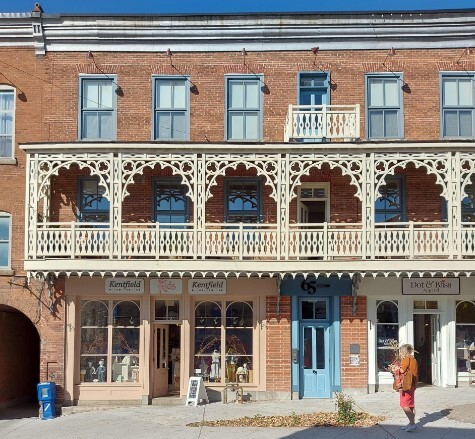
Intricate architectural detailing on a second-storey verandah
Black Watch Building
One of the notable landmarks in town known as the “Black Watch” building, was constructed in 1910 in a classical revival style. It’s believed that the structure was built after the devastating fire of September 1909. Once a three-storey building, it was rebuilt with two, and has long been a commercial building housing countless businesses over the decades.
While there is very little information about the Black Watch Tobacco Company, the original owner was Daniel Shipman, first settler in Almonte, arriving in 1821. John Murphy was the second owner who established the North American Hotel. Murphy sold to John Hanover in 1865, who in turn sold the property to Henry Stafford. The hotel was renamed – Stafford’s Hotel.
Note: Henry Stafford married into the Hanover family. Henry was born in Drummond Township to Tobias Stafford and Elizabeth McGarry, natives of Southern Ireland.

Thoburn Mill
Another reminder of Almonte’s origins as a milling town, is the Thoburn Mill.
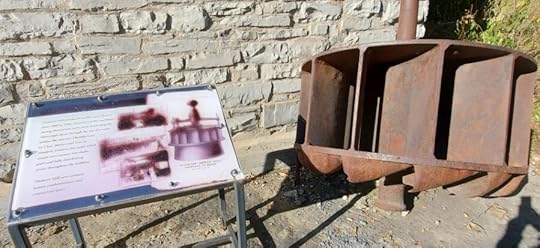
The turbine (seen above- right) was commonly used as a way to generate power for the mills in the early days of the settlement.

“Thorburn Mill produced woollen grey-flannel from 1880-1956. Power to run the machinery during that period came from harnessing the Mississippi River through the use of a water turbine like this one. Manufactured by Chas. Barber and Sons in Meaford, Ontario, this water wheel would turn various line shafts, gears and belts distributing power throughout the building.“
The Almonte Post Office
Another handsome building along the main street is the Almonte Post Office, built in 1890, with a steep gabled roof and central clock tower.
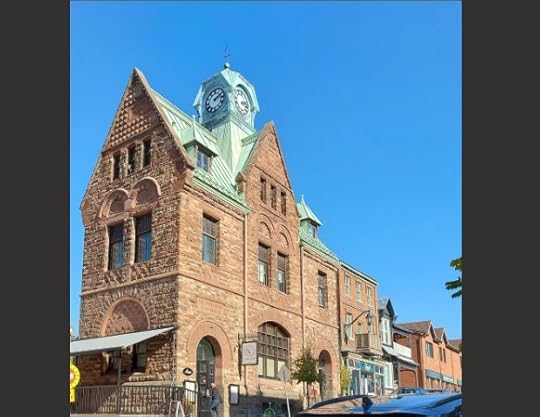
The photo below, shows the post office as it appeared in its early days, (at the end of the street). The photo on the left shows the building as it appears today.
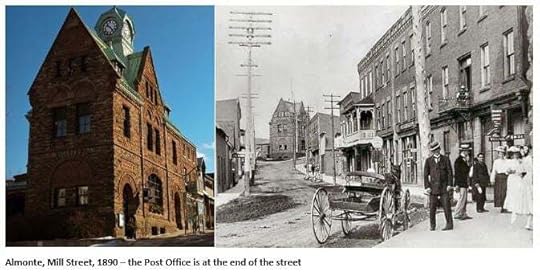
The Superior Restaurant
Fondly described by some locals as ‘the Supe’, this venerable old restaurant has served delicious home-style meals on Mill Street since 1948.
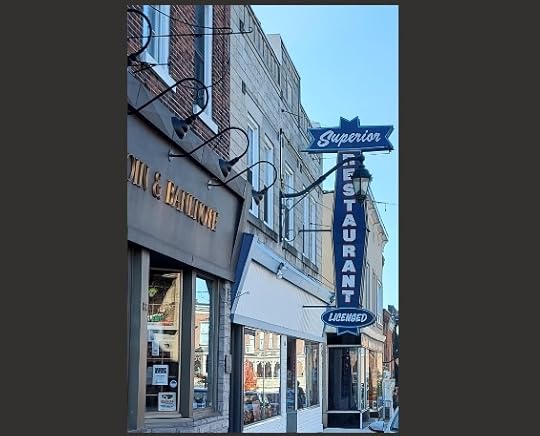
Their breakfast is just one of their tasty specialties!
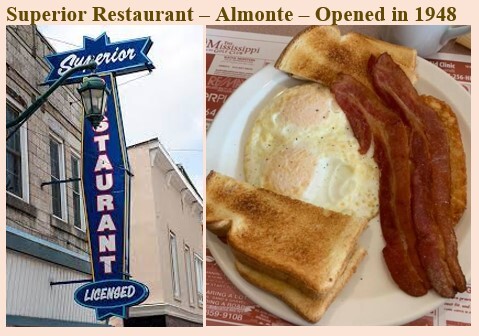
We make our way along the main street, arriving at our destination – Mill Street Books.

The store has a wonderful selection of books for every reader, and there was a variety of customers of all ages browsing in the store.

The book-signing table – a cheerful spot near the window.

Many stopped by the store to pick up some reading material, and shop through the wide selection of books.

There were some wonderful conversations with former Lanark County teachers and students who shared their stories of their teaching days, and the schools they attended.

What a lovely surprise to see Rose Mary Sarsfield, one of the executive members of the Lanark County Genealogical Society. It was great fun to have a chance to catch up on the news and spend some time together.
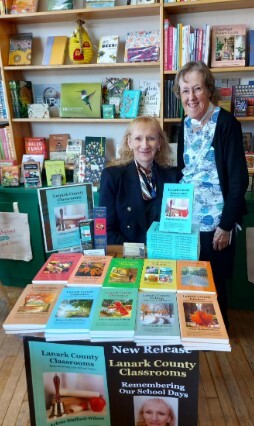
As always, thanks to my husband, Kevin, who is more often seen on the other side of the camera, as he is the photographer for all the events.

After a busy day, it was time to say ‘good-bye’ to the picturesque town of Almonte, a town brimming with the history of our industrious pioneer settlers. A big thank-you to Mill Street Books, at 52 Mill Street, for kindly hosting the book signing for, “Lanark County Classrooms: Remembering Our School Days”
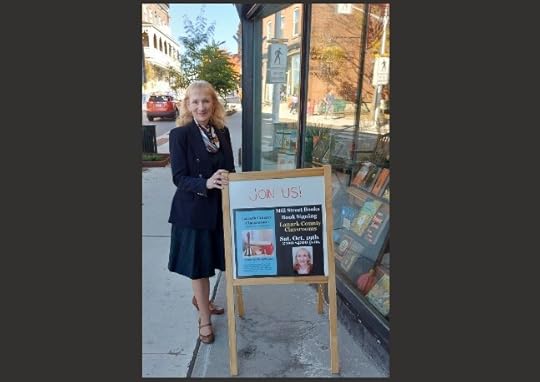
Arlene Stafford-Wilson
Honorary Life Member, Lanark County Genealogical Society
Lanark County Pioneer Families Humanitarian Award 2023
Francois Bregha Storyteller Award
Member, Association of Professional Genealogists
Author of : “Lanark County Kitchen: A Maple Legacy from Tree to Table”, “Lanark County Christmas”, “Lanark County Comfort”, “Lanark County Collection”, “Lanark County Calling”, “Lanark County Classics”, “Lanark County Connections”, “Lanark County Calendar”, “Lanark County Chronicle”, “Lanark County Kid”, & “Recipes & Recollections”, and “Lanark County Classrooms: Remembering Our School Days”
October 18, 2024
Irish Wakes
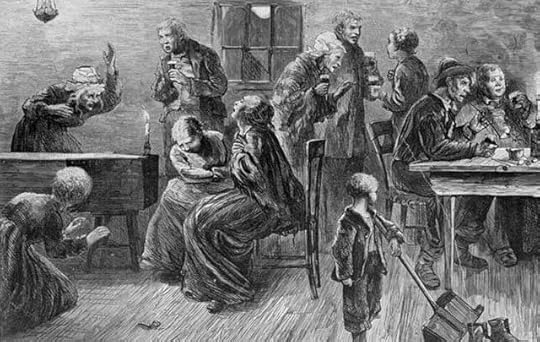 Depiction of an Irish wake – 1873
Depiction of an Irish wake – 1873Traditions of the Irish Wake
“The terrible thing about dying is
that you miss your own wake”
David Allen, Irish Comedian
Traditions seem to go on forever in small rural communities. They are passed down from father to son, and from mother to daughter. The tiny community of Ferguson Falls was settled by seven Irish bachelors and their story was told and re-told through the ages, so it wouldn’t be forgotten. When these young men landed from the old country in the early days they made a pledge to help each other to succeed in the new land, and if even one of them failed to thrive they would all return to Ireland. They were Patrick Quinn, John Quinn, James Carberry, William Scanlan, Terrence Doyle, John Cullen and James Power.
Around the same time my own ancestors arrived – the Stafford and the McGarry families, from County Wexford and County Westmeath, and the Irish-Catholic community grew and prospered in this idyllic community along the Mississippi River in Drummond Township.
In those days it was unusual and even frowned-upon to marry outside of one’s religion, and so the traditions and customs brought from the old country remained firmly entrenched in these early settlers and their families and were passed down for generations. It’s not surprising that many of these practices were still taking place in the 20th century, some with pagan Celtic origins, some more religious, and some so ancient they could no longer be explained.
As a young girl I heard stories, mostly from my father, who grew up near Ferguson’s Falls, and also some vivid tales from some of the old timers in the area. Some of their most colourful accounts included stories about their Irish wakes.
I remember my father telling me about his uncle’s wake, held in the family home, as was the custom. He said that the wakes were another excuse for people to get drunk, maybe a little drunker than usual, and they did some things that were almost unspeakable. He recalled his deceased relative being ‘laid out’ on the dining room table and that late at night two of the intoxicated guests attempted to pour whiskey down the dead man’s throat.
Many years ago, I also heard from one of the old-timers, James ‘Jim’ Quinn, a direct descendant of one of the seven Irish bachelors, that the standard rate to dig a grave was a bottle of whiskey. The usual amount was twenty-six ounces and was split between two men, who dug the graves by hand at St. Patrick’s cemetery. He was, in fact, according to him, one of the two who dug the grave for my great uncle Jimmy Richards, and the lads were paid in the usual way, a bottle of whiskey, from my great aunt Tessie Richards, the departed’s sister.
The ‘Third Birthday’
The eldest ones used to refer to death as ‘the third birthday’. They claimed that the first birthday was the day you were born, and the second birthday was your baptism. The third birthday is the day you pass away, and should be filled with both mourning and celebration as you move from this life and enter Heaven.
Stop the Clocks

All clocks in the house are stopped at the hour of the death as a sign that the passage of time has ended for the departed. Time stands still for them, and a new period of existence begins, without time. It was believed that if time continued to move ahead that this invited their spirit to remain in the home rather than moving on. Some say it was also a way to mark the time of death. Others claimed it is done so mourners will stay as long as they please without worrying about the time.
The Open Window
Immediately after the death, the window closest to the deceased is opened for two hours. The open window allows the spirit to leave the body. No one must stand near nor block the path to the window as it might prevent the spirit from leaving, and will bring misfortune to any person who blocks it. After two hours have passed the window is closed so that the spirit doesn’t attempt to re-enter the body.

Close the Curtains
With the exception of the open window closest to the deceased, all other windows are to be closed, and the curtains should be drawn until the body is removed from the home for burial. It was thought that if a moonbeam shone through a window at night that evil spirits could come in and try to steal the deceased’s soul.
Photographs Turned Face-Down
Family photographs were turned face-down so that the people in the pictures would not be spirited away with the deceased.
Cover the Mirrors
All of the mirrors in the home were either covered with cloths, or turned backward, facing the walls. There were two reasons behind this custom – that the deceased’s spirit doesn’t see their physical body in the mirror as they leave the home, and so that their spirit doesn’t get trapped inside the looking glass.
Mourning Cards
In the old days people kept black-bordered funeral stationary in their homes. Shortly after the death occurred, they wrote an announcement by hand, on a full sheet, enclosed it in black-bordered envelope and pinned the notice with a thumb-tack to the outside door. A black ribbon was also hung on the door. Neighbours could stop and read the announcement and learn of the date and times of the wake and funeral. A note at the bottom of the page encouraged neighbours to spread the news. A call was placed to local printers to order formal funeral cards, which included information about the deceased, and sometimes a photo or a prayer. The Mourning cards were also known as Prayer cards or Holy cards. Local newspapers were called and orders for obituaries were placed. The Mourning cards were available at the wake and at the funeral and given as a keepsake for the mourner to bring home with them.

Traditional Mourning stationery
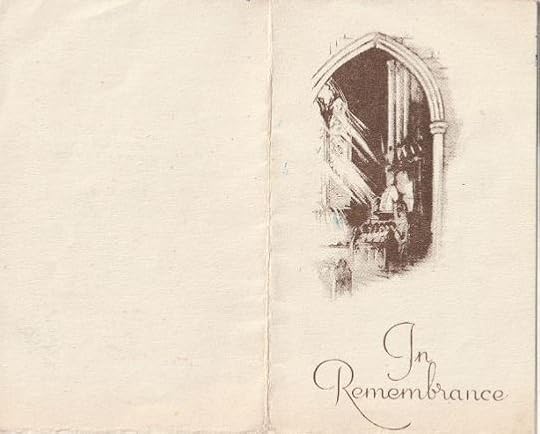
Mourning card – Anastasia ‘Stacy’ Richards Stafford (my grandmother) 1954
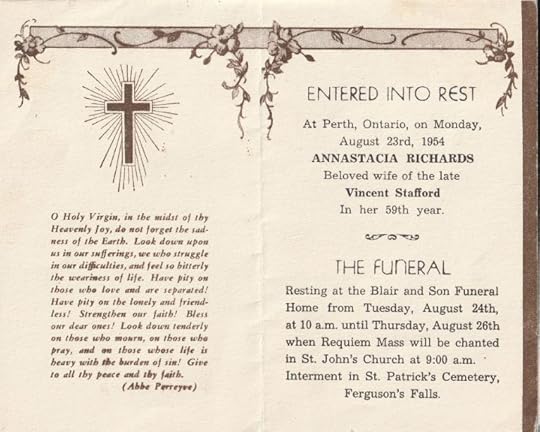
Anastasia ‘Stacy’ Richards Stafford – Mourning card – 1954
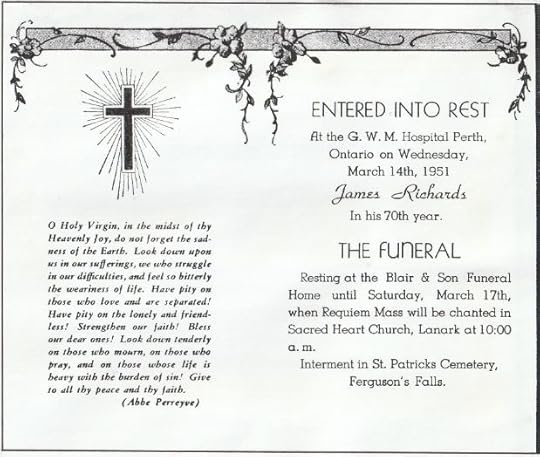
James ‘Jimmy’ Richards – Mourning card – 1951 (Jimmy, my great-uncle, was a farmer in Ferguson Falls and well-known local musician who played his fiddle regularly at the infamous Stumble Inn along the Mississippi River at Ferguson Falls)
Preparation
The body of the deceased was washed with Holy water, and dressed in their best clothing. There were often older women in the community who performed this task for the families, and were offered whiskey or food as payment and thanks. Men were shaved and both men and women had their hair combed and arranged nicely. Conservative dress was expected for the deceased and bright or pastel colours were not considered appropriate. The bodies were laid out on top of white sheets, usually on a long flat surface, such a dining room table. In Catholic homes rosary beads would be wound around the hand, with the crucifix laying on the person’s chest, close to their hearts. Once the body was prepared the deceased was never left alone in the room. At least one person must remain, and usually there were groups of people who remained awake through the night with the dearly departed. This custom of remaining awake is the origin of the term ‘wake’.
Candles
In some families white candles were placed all around the table where the deceased was laid out, however some families used only 4 candles placed around each of the four corners of the table. Candles were to remain lit (replaced as needed) until the body left for the funeral. It was bad luck to let one of the candles burn out and they were replaced as they burned down close to the end of the wick. The candles used at wakes were said to have healing powers, and the butts of the used candles would be saved and rubbed on burns and cuts.

Keening
Keening comes from the Gaelic word meaning ‘to cry’. Women from the neighbourhood would gather at the wake and sob. There were even professional keeners who could be hired to cry at wakes. The art of keening originates from the Irish Banshees who shrieked and screamed foretelling a death. It’s been said that every family of Irish origin has their own Banshee, and that they even traveled with families across the ocean to the new world.
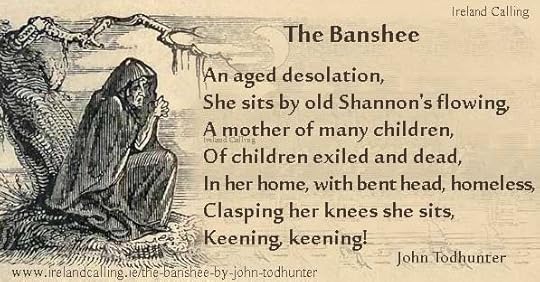
John Todhunter, Ireland Calling
What to Expect
If you’re planning to attend an Irish wake, then be sure to bring a little something for the family. Food, flowers or something to drink is always welcome, and a bottle of good spirits is always appreciated.
Although there is no dress code, wearing black or somber colours is a sign of respect to the family.
After a brief viewing of the deceased, you may pay your respects to the family with a few words, like: “Sorry for your troubles.”, or “Sorry for your loss.” It is a stressful time, and it’s not as important what you say, but more that you showed respect by attending.
The time you spend at the wake can be brief, as little as fifteen or twenty minutes, if you didn’t know the deceased very well. The busiest time will be the evenings, after suppertime, between 5 p.m. and 8 p.m. Neighbours, good friends and family members will remain at the wake for four to five hours, and the closest will stay all night, at least one night, in the room where the deceased is laid out.
The Food and Drink
After the wailing is over, the more social aspects of the wake begin. Food and drink for visitors are provided by the family, and it is customary for guests to bring a bottle of spirits, or some food for the wake. Shepherd’s Pie, Irish Stew, Corned Beef and Cabbage, cold cuts, and small sandwiches are common at wakes. Tea is served in fine china cups, and whiskey, beer, and wine are the most popular drinks, although any spirits will do.
Raise a Glass
It’s customary during the wake to raise your glass and toast the deceased. You might begin the toast by telling a little story about your friendship, or something amusing that happened, that the two of you shared. Some of the most popular Irish toasts at a wake: “May he rest in peace.”, “Gone, but not forgotten.”, “No one spread more love in a lifetime.”, “To absent friends.”, “To our friend who has gone on before us.”
The Smoking of the Pipe
A long-standing tradition is the custom of smoking from clay pipes. These small pipes were filled with tobacco for visitors to the wake house to take. Visitors lit the pipe and took a draw, exclaiming “Lord have mercy on their soul”. Non-smokers were also expected to partake of the ritual and in some cases snuff was also taken. After the funeral, the family broke the wake-pipes in two and buried them outside.
The Story-telling
It wouldn’t be a proper Irish wake without telling stories or reciting poems about the dearly departed. Fond memories are shared and become more animated and exaggerated as the whiskey flows throughout the days and evenings. There are stories of the school years from former classmates, and stories of the departed’s years of work, and about their trade or profession. Family stories and memories are shared with guests, with highlights of a life well-lived, and special anecdotes of their days on the Earth. Fiddles and flutes are played and songs are sung, jigs are danced, and stories continue throughout the days and evenings.
At midnight, the Rosary is said, concluding with: “Pray for us now, and at the hour of our death.” The neighbours, friends, and other guests leave the home, with only those closest to the departed remaining.
Some family members and dearest friends will stay all night in the room with the deceased. The stories and the drinking will continue overnight, and a new group will relieve them in the morning so they can get some rest. It is usual to wake for two to three nights before the funeral. The reason for waking at least two nights goes back to the very old times, and was to allow time in case the person was merely unconscious.
The Funeral
On the third day of the wake, the body is placed in a coffin and carried out of the home, always feet first, in order to prevent the spirit from looking back and beckoning another member of the family to join them.
Once the departed has been carried from the home, the mirrors are uncovered, the curtains pulled back, and the photographs are displayed again.
Exactly six pallbearers carry the coffin, and there should be 6 handles on the casket, three on each side, in remembrance of the Holy Trinity: Father, Son, and Holy Ghost. It isn’t always the case these days, but that is the Irish tradition. It is also thought to be bad luck to go home the same route as the one used by the funeral procession.
The funeral is usually held in church, and after that everyone proceeds to the cemetery. A short graveside service will be conducted by the priest.
Rain is a Blessing
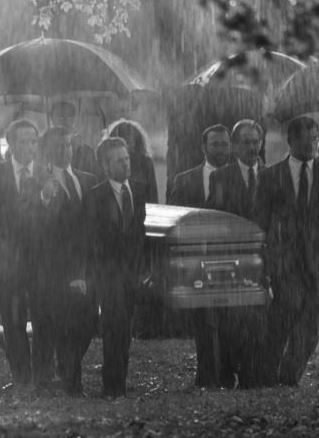
Rain the day of the funeral is a sign of a blessing, and if you hear a thunder-clap it means that the deceased has arrived in heaven.
After the funeral, everyone will be invited back to the house, to a bar, or community location for some food and drinks to toast to the deceased and honour their memory together for one last time.
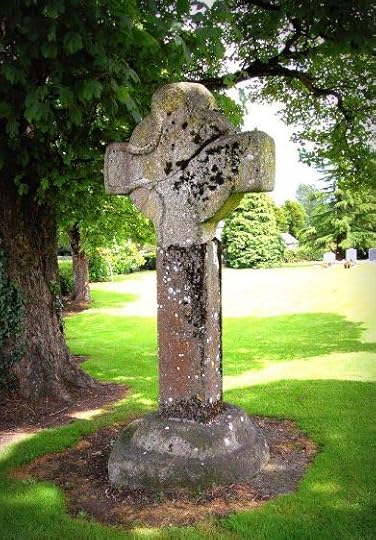
Many of the traditions of the Irish wake live on today, depending on where you live. Some customs have been adapted for modern times, and some of the old ways passed down through families, are strictly followed, as they were in days gone by.
“Grant them eternal rest, O Lord,
and may the souls of the faithful departed,
through the mercy of God, rest in peace.
Amen.”
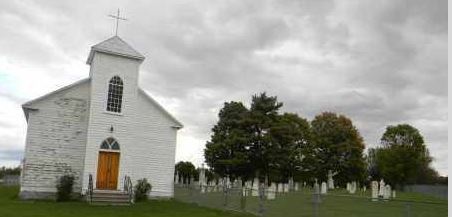
St. Patrick’s Church, Ferguson Falls, Ontario, Canada, est. 1856.
“But since it fell into my lot
That I should rise and you should not
I’ll gently rise and softly call
Good night and joy be to you all
So fill to me the parting glass
And drink a health whate’er befalls
Then gently rise and softly call
Good night and joy be to you all.”
“The Parting Glass”, written by Trad / David Anthony Downes
Sources for “Irish Wakes”
Delaney, Mary Murray. Of Irish Ways. Dillon Press, Inc, 1973
Staffords Funerals, website, Dublin, Ireland
Bourke.A (1988), The Irish Lament and the Grieving Process, Women’s Studies International Forum, Vol.11, No.4
Danaher.K (1962), In Ireland Long Ago, Mercier Press.
Lysaght.P (1988), Caoineadh os Cionn Coirp: The Lament for the Dead in Ireland, Folklore 108.
About the Author:
Arlene Stafford-Wilson
Arlene Stafford-Wilson was raised on a small farm in Bathurst (Tay Valley) Township. Her Stafford and McGarry ancestors left southern Ireland, and arrived in Lanark County in 1816. She also descends from the McKittrick, Waters, Doyle, Carroll, and O’Keefe families, also from southern Ireland.
Honorary Life Member, Lanark County Genealogical Society
Lanark County Pioneer Families Humanitarian Award
Francois Bregha Storyteller Award
Member, Association of Professional Genealogists
Author of : “Lanark County Kitchen: A Maple Legacy from Tree to Table”, “Lanark County Christmas”, “Lanark County Comfort”, “Lanark County Collection”, “Lanark County Calling”, “Lanark County Classics”, “Lanark County Connections”, “Lanark County Calendar”, “Lanark County Chronicle”, “Lanark County Kid”, & “Recipes & Recollections”
 Arlene Stafford-Wilson
Arlene Stafford-Wilson*

.

Fall 2024:
“Lanark County Classrooms: Remembering Our School Days”
“A delightful collection of stories and memories from former students and teachers, spanning the 1940s through to the 1980s, in small-town, village, and one-room school-houses across Lanark County.”

October 17, 2024
Ghost of Ferguson’s Falls
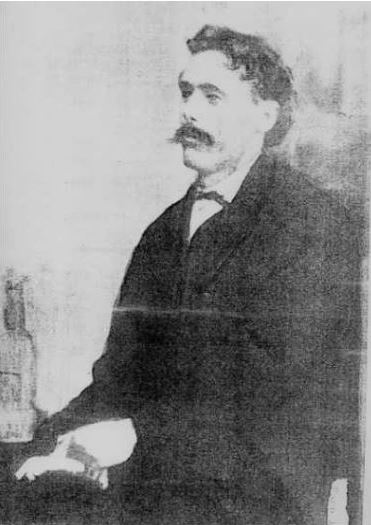
James (Jimmy) Phelan (pronounced Whelan)
Who is the Ghost
of Ferguson’s Falls?
The old-timers said that her name was Mary, a good Catholic girl, from Ferguson’s Falls, who lived just down the hill from the church; but there’s no one left around anymore who knew her. They say she died at home, alone in her bed, a photo of Jimmy clutched in her hands. She never married, although there was always an abundance of interested young lads eager to spend time with tall willowy Mary, a porcelain-pale beauty, with flowing red hair, and the face of an angel.
Mary’s fate, you see, was sealed, the night she heard that her Jimmy was gone forever, drowned in the cold autumn waters of the Mississippi River. Her handsome young log-driver, killed in a log jam. Jimmy was her one true love, and she never got over his death, and couldn’t accept the fact that they’d never be together again.
Gates of Glass
It wasn’t long after Jimmy’s funeral at St. Patrick’s Church, that Mary began to walk along the banks of the river, sometimes in broad daylight, but mostly at night. Some say she was hoping to meet up with him again, and that she believed in the old Irish legends of the ‘gates of glass’. It was one of the beliefs brought from the old country – when the river was still and smooth, that spirits could pass between the two worlds, from our world to the world beyond, and back again. It was believed that the water became a portal, and the Irish called it the gates of glass.

Ferguson’s Falls, autumn, along the river
Mary’s walks along the river went on for many years. They say she was quite a sight at times, in her long flowing dressing gown, often late in the evening, to avoid the questions and the prying eyes, searching for a quiet place where the water was still, hoping to open the gates of glass and reunite with her beloved.
A Letter from
Christopher Forbes
From a letter written in 1923, by Mr. Christopher Forbes, of Perth, Ontario:“The Phelan family live in this district. The name is pronounced ‘Whalen’, locally. James’ brother, Thomas, whom I knew intimately, died a few years ago. Regarding the James Phalen tragedy, John Smith of Lanark Village, an old timer and singer of the ‘come all ye’ type, wrote the words which I now enclose. He sings the Jim Whalen song with much pathos, and with that peculiar dropping off of the last word from a singing tone to a speaking voice. This style of finishing a song is used by sailors and shanty-men.
I was fortunate in meeting an old shanty foreman, Peter McIlquham, well known on the Mississippi River for over half a century, who told me he was present at Jim Whelan’s death.
It happened 45 years ago (1878), at King’s Chute, on the Mississippi River. Whalen was a river-man under ‘Old Quebec’, a French-Canadian, whose real name was Edward Leblanc. McIlquham was also a foreman on the river at this time. Both rafts of longs had come out of Crotch Lake by the river-men. McIlquham came to assist Old Quebec putting over King’s Chute. A dangerous and difficult jam formed in the Chute. ‘Old Quebec’, McIlquham, and Phalen were close together when the jam shifted, and precipitated Phalen into the water.”
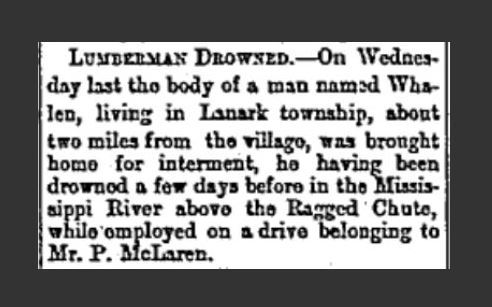
May 26, 1876, p. 3, “The Perth Courier”
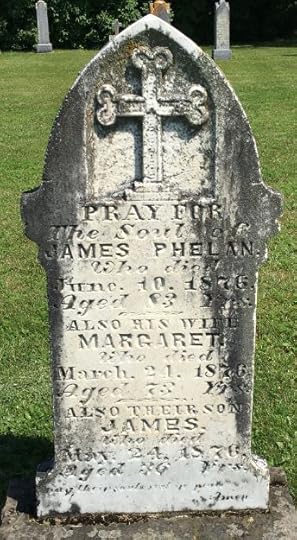
Gravestone of Jimmy Phelan, and his parents, James Phelan, and Margaret O’Brien Phelan, St. Patrick’s Cemetery, Ferguson’s Falls
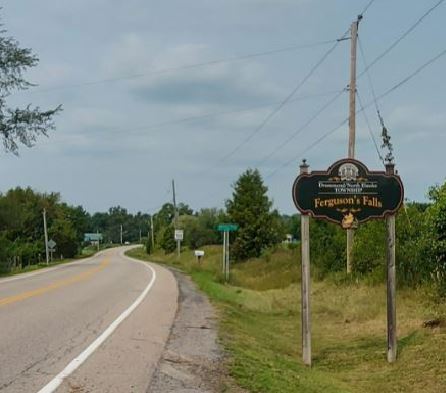
The sign as you enter the village
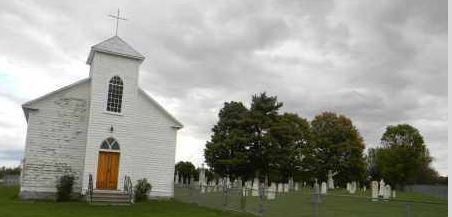
St. Patrick’s Church and cemetery, Ferguson’s Falls, Ontario
The Ballad
of Jimmy Whelan
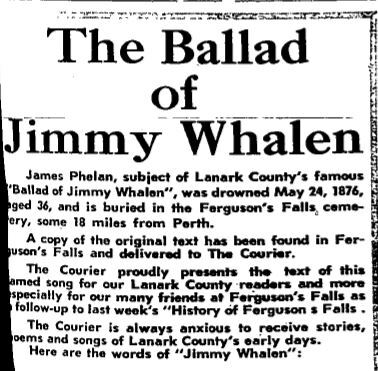


September 20, 1962, p. 8, “The Perth Courier”
Lost
Jimmy Whelan
Like the tale itself, there are two different authors given credit for writing the song – Tim Doyle, of Drummond Township, and John Smith, of Lanark. There was also more than one ballad composed, and the latter, “Lost Jimmy Whelan”, was written about his beautiful young lover, as she wanders beside the Mississippi River, at night, searching for Jimmy.

Lost Jimmy Whelan
All alone as I strayed by the banks of the river,
Watching the moonbeams as evening drew nigh,
All alone as I rambled, I spied a fair damsel
Weeping and wailing with many a sigh.
Weeping for one who is now lying lowly,
Mourning for one who no mortal can save.
As the foaming dark water flow gently about him,
Onward they speed over young Jimmy’s grave.
She cries, “Oh, my darling, please come to me quickly,
And give me fond kisses that oft-times you gave.
You promised to meet me this evening, my darling,
So now, lovely Jimmy, arise from your grave.”
Slowly he rose from the dark, stormy waters,
A vision of beauty more fair than the sun,
Saying “I have returned from the regions of glory
To be in your dear loving arms once again.”
“Oh, Jimmy, why can’t you tarry here with me,
Not leave me alone, so distracted in pain.”
“Since death is the dagger that’s cut us asunder,
Wide is the gulf, love, between you and I.”
“One fond embrace, love, and then I must leave you;
One loving farewell, and then we must part.”
Cold were the arms that encircled about her;
Cold was the body she pressed to her heart.
Slowly he rose from the banks of the river,
Up to the heavens he then seemed to go
Leaving this fair maiden, weeping and mourning,
Alone on the banks of the river below.“

Although she’s been gone for many decades, some say they still see Mary, late at night, strolling along the Mississippi River, in Ferguson’s Falls, searching for Jimmy.
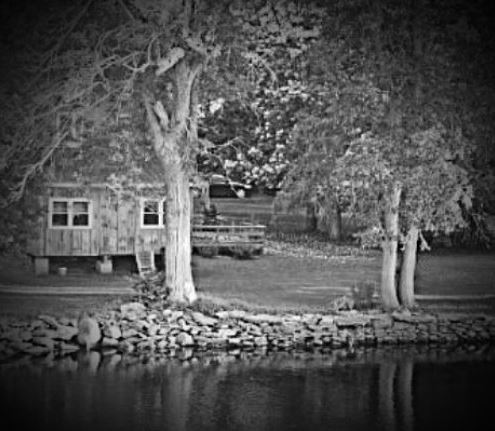
Along the Mississippi River, the Stumble Inn, Ferguson Falls – a spot where Mary’s been sighted numerous times over the years
She’s often seen in a long white gown, her fiery red hair cascading down her back, and sometimes she appears to be almost gliding ever-so-lightly along the shores. Is she still searching for that smooth calm water, that portal between the worlds of the living and the dead, to reunite with her Jimmy through the gates of glass?

Will this beautiful apparition in her flowing white gown forever be known as the Ghost of Ferguson’s Falls?

Arlene Stafford-Wilson
Honorary Life Member Lanark County Genealogical Society
Lanark County Pioneer Families Humanitarian Award
Francois Bregha Storyteller Award
Member Association of Professional Genealogists
Author of: “Lanark County Kitchen: A Maple Legacy from Tree to Table”, “Lanark County Christmas”, “Lanark County Comfort”, “Lanark County Collection”, “Lanark County Calling”, “Lanark County Classics”, “Lanark County Connections”, “Lanark County Calendar”, “Lanark County Chronicle”, “Lanark County Kid”, & “Recipes & Recollections”
Read more about the life and death of Jimmy Whelan, and the stories of the beautiful young lady who walks along the river at night searching for her long lost lover.
“Lanark County Calling: All Roads Lead Home”
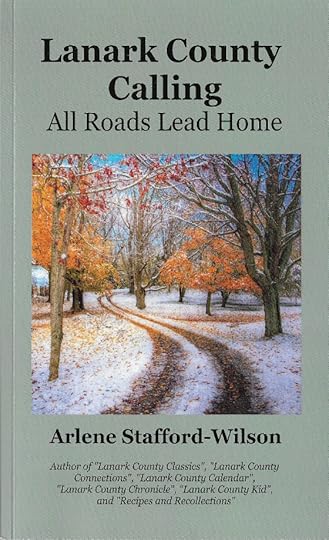
New for Fall 2024
“Lanark County Classrooms: Remembering Our School Days”
“A delightful collection of stories and memories from former students and teachers, spanning the 1940s through the 1980s, in towns, villages, and the rural one-room school-houses across Lanark County.”

October 15, 2024
The Humm Reviews “Lanark County Classrooms”

Book Review by: Glenda Jones, Columnist, the Humm
“Local author, Arlene Stafford-Wilson has done it again: given us a nostalgic glimpse of our own past with her latest book, “Lanark County Classrooms”.

School Days
and Sentiments
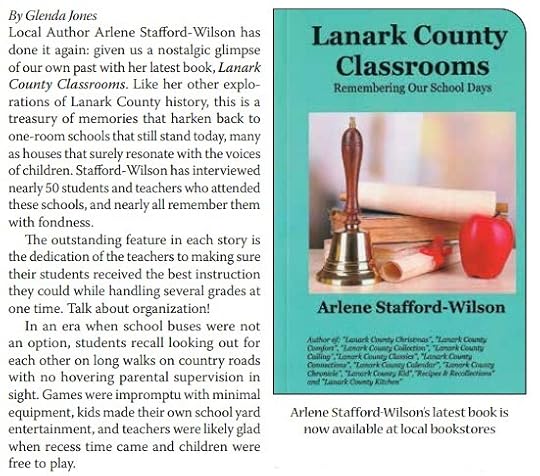
“I would suggest that this book be required reading for present day students, if for no other reason than to make them appreciate the advantages they now enjoy and take for granted. I doubt many young lads of 13 would be enamoured with getting up at 6:30 a.m. to make sure the stove was lit, the room was tidy, and the snow was shovelled.”
* * *
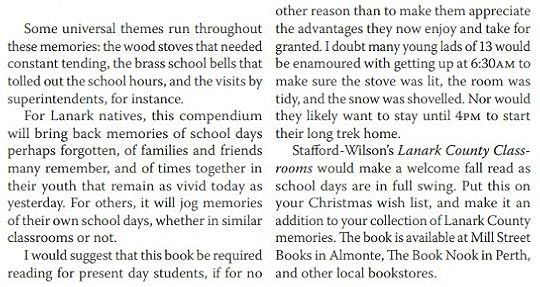
* * *
Join us on Saturday, October 19th, at Mill Street Books, 52 Mill Street, Almonte, Ontario. Drop by between 2-4 p.m.

* * *

Arlene Stafford-Wilson reading from “Lanark County Classrooms: Remembering Our School Days, Saturday, Oct. 12th, 2024, at the Lanark & District Museum.
Arlene Stafford-Wilson
Honorary Life Member, Lanark County Genealogical Society
Member, Association of Professional Genealogists
Lanark County Pioneer Families Humanitarian Award
Francois Bregha Storyteller Award
Author of : “Lanark County Kitchen: A Maple Legacy from Tree to Table”, “Lanark County Christmas”, “Lanark County Comfort”, “Lanark County Collection”, “Lanark County Calling”, “Lanark County Classics”, “Lanark County Connections”, “Lanark County Calendar”, “Lanark County Chronicle”, “Lanark County Kid”, & “Recipes & Recollections”
October 13, 2024
Lanark Museum – Our School Days

Someone once said that if you only visit Lanark County once in a lifetime then you must come in October to see our maple leaves at their peak of colour. It’s during this time when we see the fiery reds, the brilliant shades of orange, the sunny yellows, and bright greens all around us, and sometimes all colours appear on the same tree. It was a perfect day to visit the Lanark Museum, and share some stories of school in the ‘good old days’.
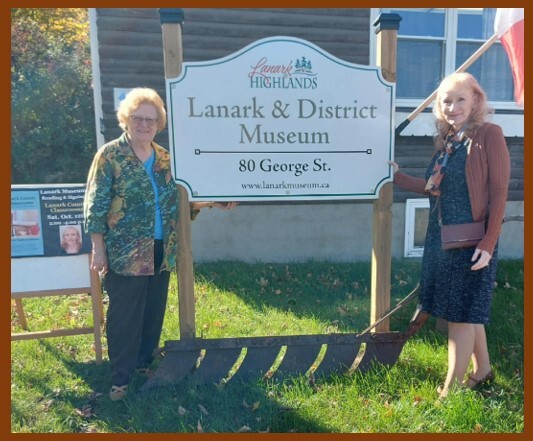
Was your ancestor a veteran of WWI or WWII? The Lanark Museum has some wonderful displays highlighting area soldiers and details of their military service.

There are so many interesting local artifacts, like some pieces donated from local residents, like the handsome grandfather clock, and the old-fashioned spinning wheel.

With so many from the area serving in WWI and WWII, there is an extensive collection of items donated by local residents.
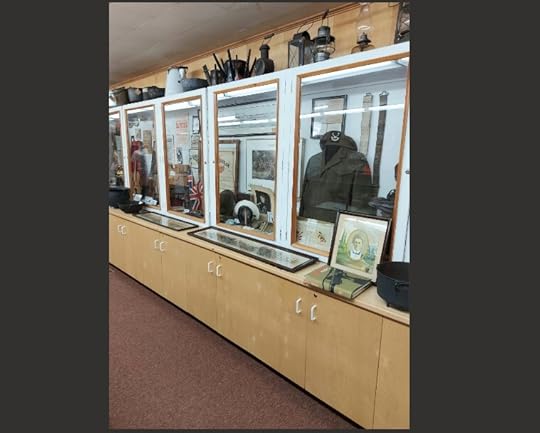
There are some wonderful local quilts on display, with descriptions, and information on the families who donated them.

One of my favourite quilts is the Shamrock Quilt, donated by the Hollinger family, and has the names of many of the Ferguson’s Falls residents from the old days, including the Stafford family.
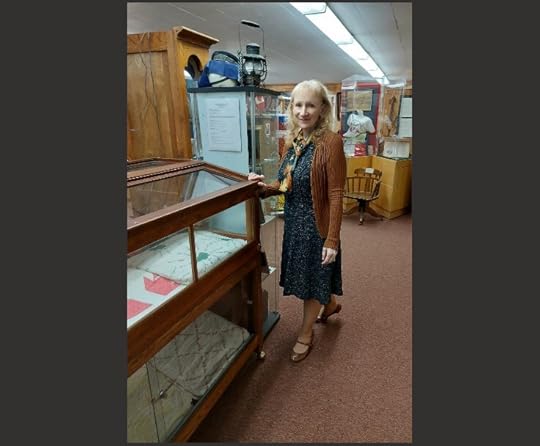
There are some wonderful antique musical instruments, and some delicate items of clothing from days gone by.

Some of the lovely pieces from the Lanark Museum’s china collection serve as a reminder of the gracious and elegant styles of entertaining in earlier times.
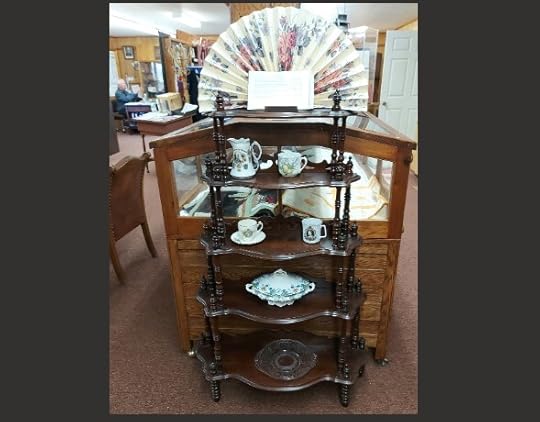
Was your Lanark area ancestor an athlete? Then perhaps you’ll find one of their trophies on display at the museum.

There are some wonderful displays of old photos of school days and group activities. Maybe your ancestor is in one of these photos?
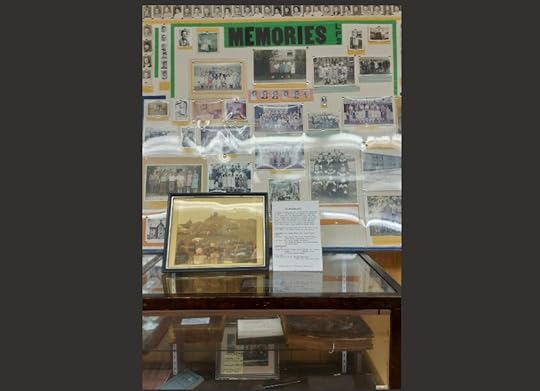
I couldn’t resist a visit with the ‘lady’ sporting her Scottish tartan. Many of the settlers to the Lanark area came from Scotland, and many of us from the area can trace ourselves back to this special part of the world, a land of misty lakes, colourful tartans, fields of heather, and ancient castles.
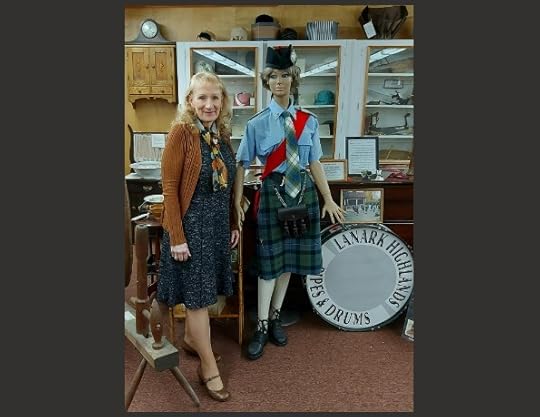
Some may be old enough to recall the days when every school had a bell on the roof. This bell was from the Lanark Continuation School.

The history of logging and lumbering in the area goes back many generations, and two of the main competitors in the business were the Caldwell family and the McLaren family. Some of the Caldwell family treasures are on display, reminding us of one of the most important industries and largest employers at one time.

Who could resist a visit to the maple display, with some of the old implements used by our pioneer settlers? Lanark County is the Maple Syrup Capital of Ontario, and many families have produced syrup over the past two hundred years, some for their family’s use, and a smaller number producing this precious commodity for sale to the public. If you’re visiting the area, this is the best souvenir you will ever bring home!

One of Lanark’s most important industries was the Glenayr Kitten Mill. At one time it was one of the largest employers in the area, and many of us will have fond memories of our visits to this special place to purchase their exceptional clothing.
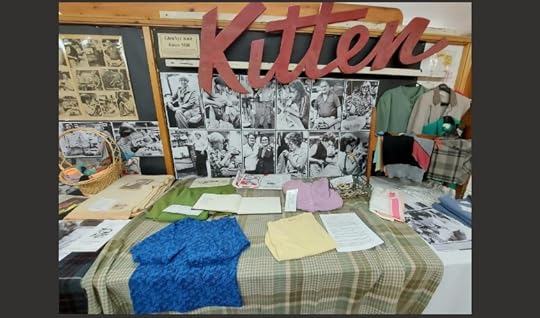
After a wonderful visit upstairs, we took our places on the lower level to prepare to read some stories and discuss school in the good old days.
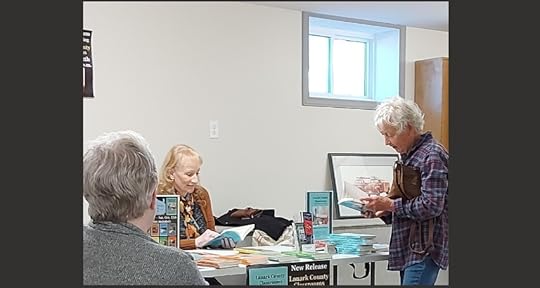
For the next while we discussed a number of topics: 1. Lanark Schools, 2. Being related to your teacher, 3. The use of the strap, 4. Converting left-handed students, 5. The games we played, like softball, 6. Student custodians, 7. Transportation to schools – like horse and cutter, 8. Playing hooky!, 9. Dress codes for teachers, 10. Student protests in the 1970s at the Smiths Falls High School, 11. Life and times at the Perth High School, 12. Boarding in Perth to attend high school, 13. Rag Day at Stewart School, and 14. Anne’s story.
(stories read were written by: Earl Alexander Donaldson, Cynda McAdoo, Richard Frizell, Keith Kerr, Tom McEwen, Everett Milotte, Shirley Code Warr, Ethel Nagle, Opal Kluge, Marina Quattrocchi, Ron Thornbury, Ivy Whyte Stearn, David Bromley, and Anne Graham)
After reading and discussing the stories, one of the highlights was Anne Graham reading her own story, of her days teaching at S.S. # 4 Beckwith, at Prospect, from 1962-1965. Thank-you Anne for sharing your memories of teaching with us.

Another highlight was meeting Mr. White, who helped fight the terrible Lanark fire of June 15th, 1959. Mr. White kindly shared some of his memories of the fire, and someone found a photo from that fateful day. Mr. White was the young lad of 15, wearing the plaid shirt with his back turned.
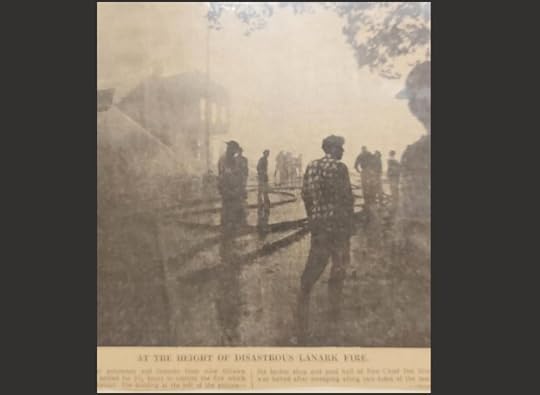
We had some great discussions of the days of school before the dawn of technology. Many thanks to those who came to listen to the stories and to those who kindly shared their own experiences with us. The refreshments were delicious, and the day was a great success. So much history shared!
And so it was time to leave the Lanark & District Museum. Anne kindly presented me with a beautiful thank-you card bearing a photo of the museum, and a charming solid chocolate bat (perfect for the upcoming Hallowe’en season!) from Village Treats in Lanark.
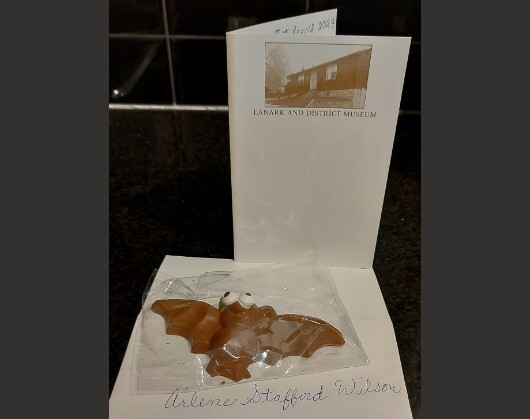
Like all good things, our busy day at the Lanark & District Museum had come to an end. Thanks to my husband, Kevin, who took all of the photos of the event, so that we can remember a special time in a special place, and the many new friends we made, and cherish our time spent with old friends as well. A special thanks to Rosetta McInnes, of the Lanark County Genealogical Society, for spending the afternoon with us. Rosetta is one of the authors who shared her story in “Lanark County Classrooms”. Also thanks to Gena Gibson, of “The Lanark Era”, for taking the time from her busy weekend covering the local news, to stop by and visit with us.

Arlene Stafford-Wilson
Honorary Life Member, Lanark County Genealogical Society
Lanark County Pioneer Families Humanitarian Award 2023
Francois Bregha Storyteller Award
Member, Association of Professional Genealogists
Author of : “Lanark County Kitchen: A Maple Legacy from Tree to Table”, “Lanark County Christmas”, “Lanark County Comfort”, “Lanark County Collection”, “Lanark County Calling”, “Lanark County Classics”, “Lanark County Connections”, “Lanark County Calendar”, “Lanark County Chronicle”, “Lanark County Kid”, & “Recipes & Recollections”, and “Lanark County Classrooms: Remembering Our School Days”
October 11, 2024
Perth Museum’s Ghosts
Perth, Ontario, is home to a number of beautiful old limestone buildings, dating back over 200 years. It’s not surprising that during this long history there have been many reports from residents, visitors, and employees of paranormal activity in the museum. Some claimed they heard unusual sounds, saw unexplained shadows, strange voices, thumping noises, or felt sudden chills or gusts of air at this old Perth landmark.
Have you experienced paranormal activity?1. Disappearance and re-emergence of objects in the house
2. Finding unidentified objects in the house
3. Appearance of unexplained marks around the house, e.g. scratches on the walls, visible streaks or scuffs on cupboards or walls
4. Hearing sounds of doors closing or opening, banging, laughter, walking, speaking, etc. in the absence of any source
5. Sudden changes in temperature
6. Lights or electronic equipment going on or off repeatedly, or not working, without any reason
7. Mobile phones not working
8. Cats or dogs whining or barking unnecessarily
9. Feeling a presence in the house
10. Feeling of being watched
A chill that travels down your spine, the unexplained feeling of dread, or a sudden drop in temperature, are physical signs that many have experienced in a haunted locale. How do places become this way? Why do spirits linger in certain buildings, or even in certain rooms?

Some say that the history of a building is almost always a primary factor. When a building is very old, and has a long history of human habitation, it’s far more likely that someone over the years has experienced strong negative feelings in that space.

Many of the stately old buildings in Perth date back into the early 1800s. Some of these historic buildings have changed hands many times over the years, like the Perth Museum. It was first built as a home for a distinguished citizen, Senator Roderick Matheson.
Roderick Matheson’s home was one of the largest and finest in Perth. Being a Senator, he often held lavish parties in the beautiful gardens to the side and rear of his opulent home.
The magnificent garden was lush and green, with apple and plum trees, gooseberries and currants, peonies, bachelor buttons, and row upon row of breathtaking, richly-scented rose-bushes.
The garden made an impressive backdrop, where he entertained the area politicians, the wealthy, and prominent business owners of that era.
His seven daughters – Mary, Rose, Flora, Isabella, Joan, Anna, and Eliza – each one strikingly beautiful in her own way, busied themselves in the garden at the Senator’s parties, greeting guests, and offering them personal tours of the impressive grounds.
Some locals say that the daughters were so attached to these gardens, and this impressive limestone home, that their spirits lingered, long after they departed this earth, and the girls may still be seen at dusk, tending the roses, strolling in the moonlight…..
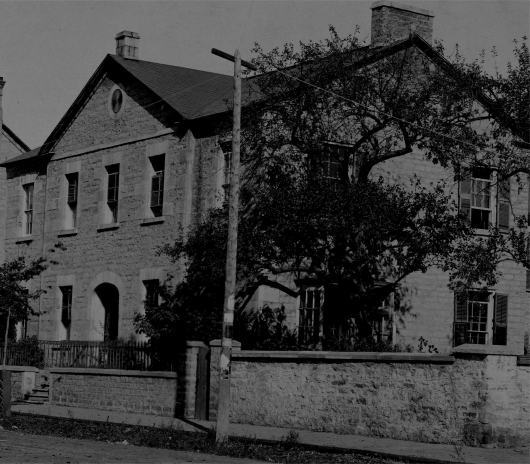
Some may not realize that the Matheson family occupied the impressive stone manor as their family home for almost a century.
Birkacre Tea RoomWhen the last family member, Eliza Matheson died in the house in 1929, the building was sold, and became the elegant Birkacre Tea Room from 1930-38, operated by William and Jessie Kinloch. Soups, sandwiches and afternoon tea were their specialties, served in the beautiful garden, during the fine- weather months.

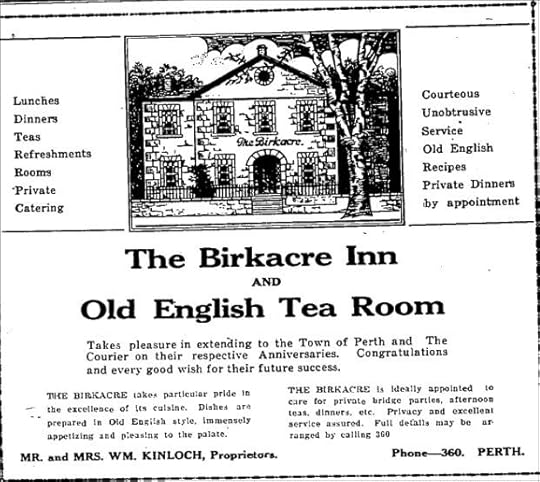
From 1938-46 the building was called The Vanity Fair, a posh restaurant owned by Clifford and Alice Carr.
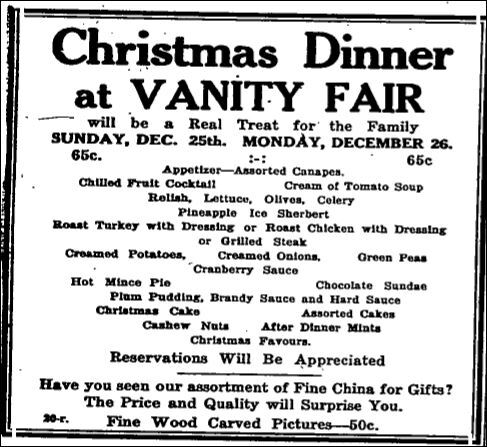
It was said that during the late 1930s and early 1940s members of the spirit world became particularly active in both the main building, as well as the gardens, as the owners played hosts to several prominent clairvoyants, at the Vanity Fair. Psychic Medium Madame Cornel was a regular guest during 1938. Madame Cornel was said to be a gifted medium, and people from the area flocked to the Vanity Fair to hear her psychic predictions.
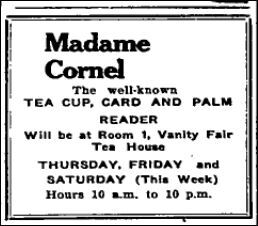

In 1939, the Vanity Fair played host to another well-known Clairvoyant from Ireland – Madame Kildare. It has been said that when Diana Kildare sat at the table and laid out her 40-year old tarot cards that you could hear a pin drop in the room.
“Unexplained Noises and Lights Along Gore Street!”There were many mysterious noises and lights seen both in the home, and in the garden, thought to be spirits brought back by the visiting psychics and mediums.

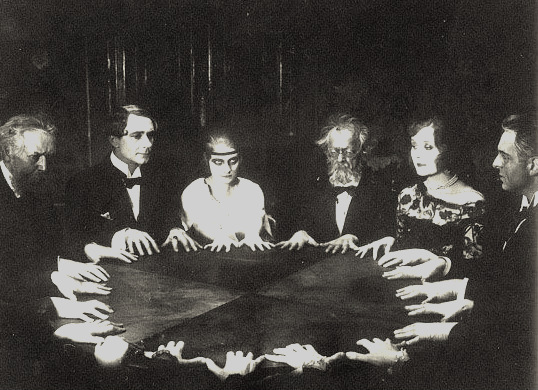
The Matheson family, particularly the beautiful daughters, didn’t seem to want to leave their home…..
Of the seven daughters in the family, only one married; and the other six girls remained at home, lavishing much time and energy tending the lush garden at the back of the property.
“I’ll Never Leave!”Although some paranormal researchers say that violence or sorrow may cause a spirit to feel bound to the world until justice is rendered, this is not always the case.
Some say it can be the strong attachment to a particular location, and that spirits may return to a place where they spent their happiest times. It’s been said that these feelings of contentment, of the person never wanting to leave, can seep into a place, either in the walls of a building, or the soil of the ground itself, and leave a certain ghostly energy or impression.
Researchers claim that ghosts tend to stay in places that they considered to be their own during their former lives, and areas that were once very closely linked to themselves as a living human being.
photo: Matheson House and rear garden (now the Perth Museum)The Matheson House family garden– For many decades, many have reported seeing shadowy figures at dusk, tending the plants and flowers.
Former employees have shared their eerie experiences over the years.
………………..
The Perth-Upon-Tay Legion bought the building in 1947, and it was their meeting place until 1967, when it became the Perth Museum.
……………….
Today, Matheson House is home to the Perth Museum, located at 11 Gore Street East in Perth.
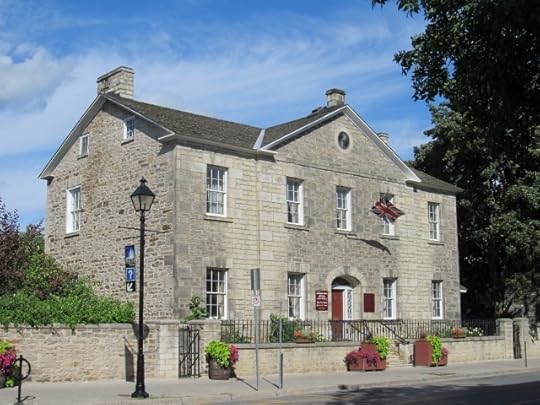
A view of the formal Dining Room of Matheson House, restored to its former glory as a stately family home.
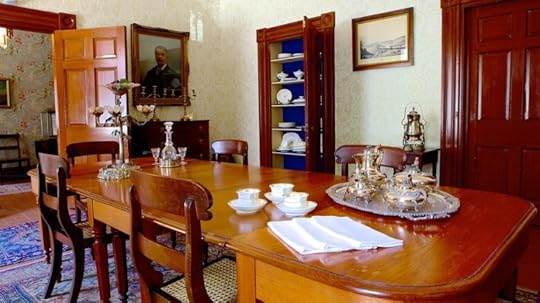
Matheson House Drawing Room – beautifully restored, one of the many grand rooms at the Perth Museum
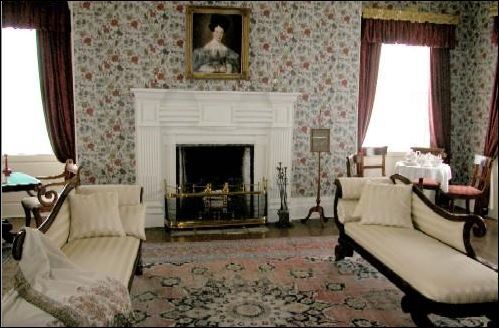
On your next visit to Perth, Ontario, step back in time at the Perth Museum, where you will see lovingly-restored rooms, decorated as they were during the years when the prominent Matheson family occupied the home.

Remember to stop by the garden, where the lovely young Matheson daughters faithfully tended their plants and flowers, and entertained prominent guests.
…………….
Don’t be surprised if you sense something unusual as you tour this old building. You may feel a draft, or see a flash of light, or movement.
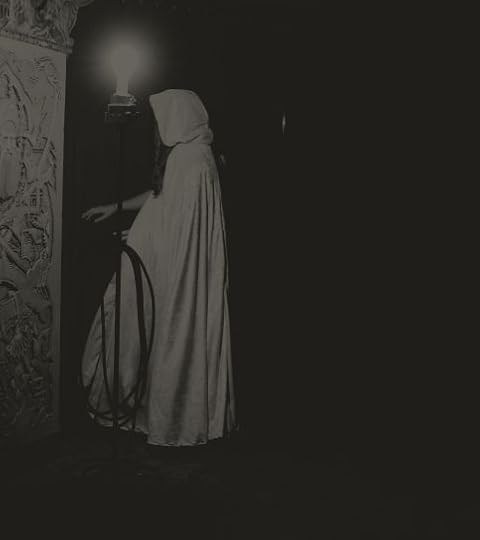
You may even feel as though someone is watching you!

…………….
…………….
For more information on the Perth Museum (former home of the Matheson Family)…………….
Tel: 613-267-194711 Gore Street East, Perth, ON, K7H 1H9……………………………………………………………………………………………………………………………………………………..

……………………………….
Read about an eerie encounter with the spirit world that took place in the 1960s. What happened on October 24th, 1967 when a young girl wandered into the garden at Matheson House? Who did she encounter? What happened next?
Discover who or what was lurking, in the haunted garden at Matheson House in:
‘Lanark County Connections – Memories Among the Maples’. ISBN 978-0-9877026-47…………………………………
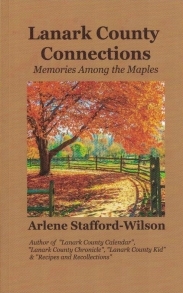
Arlene Stafford-Wilson
Honorary Life Member, Lanark County Genealogical SocietyLanark County Pioneer Families Humanitarian AwardFrancois Bregha Storyteller AwardMember, Association of Professional GenealogistsAuthor of : “Lanark County Christmas”, “Lanark County Comfort”, “Lanark County Collection”, “Lanark County Calling”, “Lanark County Classics”, “Lanark County Connections”, “Lanark County Calendar”, “Lanark County Chronicle”, “Lanark County Kid”, & “Recipes & Recollections”, “Lanark County Kitchen: A Maple Legacy from Tree to Table”.New for 2024:“Lanark County Classrooms: Remembering Our School Days”
“A delightful collection of stories and memories from former students and teachers, spanning the 1940s through the 1980s, schools in towns, villages, and the rural one-room schools, across Lanark County”
October 9, 2024
Balderson’s Grisly Murders
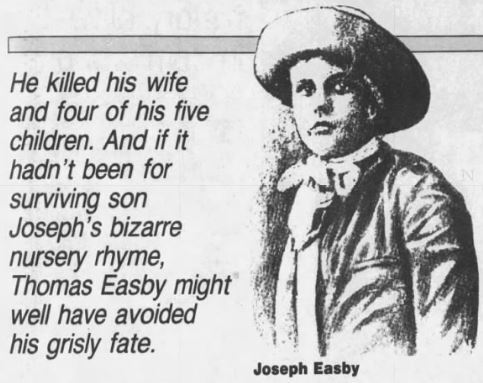
December 10, 1828
near Balderson, Ontario
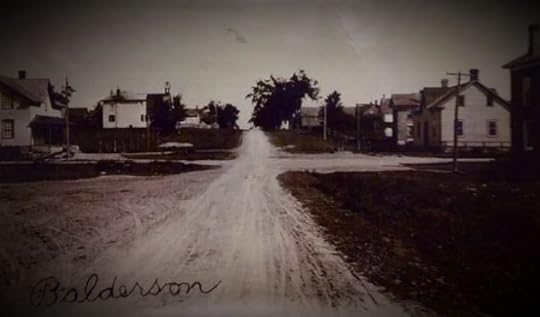
On a cold, dark, December night, right around midnight, Sinclair Tullis’ mother woke to a blood-curdling scream coming from the direction of their neighbour, Thomas Easby’s house. She sent her son to investigate and he could see that the Easby home was engulfed in flames, and heard his neighbour’s voice call out, “Who is there?”

Tullis asked him what happened, and Easby replied, “Go home. The fire is under control. I will be awake until morning.”
When Tullis returned the next morning Easby told him that all of his family had burned to death except his youngest son, Joseph, who sat quietly on the ground, not far from his father. Thomas’ wife, who was eight months pregnant, their daughter, and three sons, were all dead.

Mrs. Martha Richardson, a neighbour, volunteered to look after young Joseph Easby, age four, and although, understandably he was still in shock, she found that he was doing some very odd things. He often sang morbid songs while he was playing, “Father killed mother, sister, and three brothers.” Mrs. Richardson found these songs quite disturbing, as well as some of the games he played. Sometimes he would point to the handle of their shovel and claim that his father had struck his mother with one just like it. He also played a game where he pretended to cover his dead siblings with hot coals.
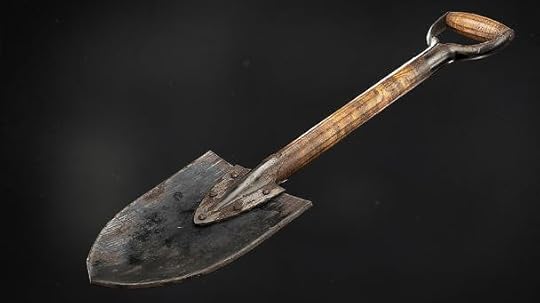
After a few weeks, when Christmas had past, and young Joseph continued to play the strange games, and sing the shocking songs, she informed her neighbour, Sergeant John Balderson, a former infantry soldier. He began to make inquiries and spoke with some of the legal officials in Perth about the young lad’s odd behaviour.
In February two magistrates, along with Dr. James Wilson and Coroner William Matheson went to speak with Thomas Easby and grew suspicious after he gave them his explanation of what happened that fateful night. They ordered an exhumation of Easby’s wife and children, and an examination was done by Dr. Wilson, who determined that Mrs. Easby’s skull was fractured in five places, and the children’s skulls also showed signs of blunt-force trauma. Easby could not explain how these injuries happened.

The following day, John Balderson, Dr. Wilson, and the local Jailer, James Young, told Easby that his family had been murdered. Easby began to cry, and said that he’d killed them all with a thick branch from a Birch tree. He insisted that he had only intended to kill his youngest child, Joseph, but that the child had looked up at him and smiled, and so he killed all of the others instead.
The Trial
At his murder trial, Easby addressed the court, “I was in a perplexed and insensible state of mind at the time of the murder and had only a faint recollection of what occurred. I seemed to have no power of myself, no volition of my own. But, I was impelled to the act by some mysterious agency, which entered my abode and appeared to assist me. After the dreadful tragedy I called some of my family by name, and discovered what I had done, and I exclaimed to myself, “Oh! My God, I have murdered them.”
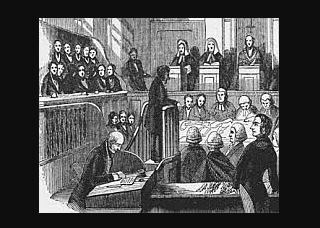
The trial judge, Chief Justice Sherwood, after pronouncing Easby guilty, declared, “Your days are numbered, your mortal course is finished.”
Easby was hanged on November 13, 1829, before the largest crowd ever gathered in Perth, Ontario. Local newspapers praised the skill of the hangman in his execution of the guilty man.

Easby’s body was buried in the Anglican section of the Craig St. cemetery, but later that same night, his remains were exhumed and delivered to the local surgeon and his medical students for the purpose of dissection. According to “The Perth Courier”, “They first skinned the body, and the hide was rolled in salt and afterwards tanned in a local tannery and cut up into small squares, which were sold to the public, bringing as much as two dollars.”
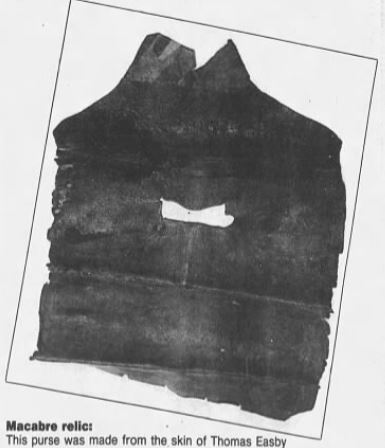
In the 1980s, a reporter from “The Perth Courier”, Michael Taylor, decided to search the area for anyone who might still be in possession of Easby’s skin. Eventually, he located Mrs. George Smith, of Balderson. She had made a purse from Easby’s hide. Another area resident, Alex Balderson, had a strip of the ‘Easby leather’, and had made it into a bookmark. He claimed that it was kept in an old family bible. In faded ink, on the back of the bookmark there was a quote from the Bible, “Whoever strikes a man so that he dies shall be put to death.”
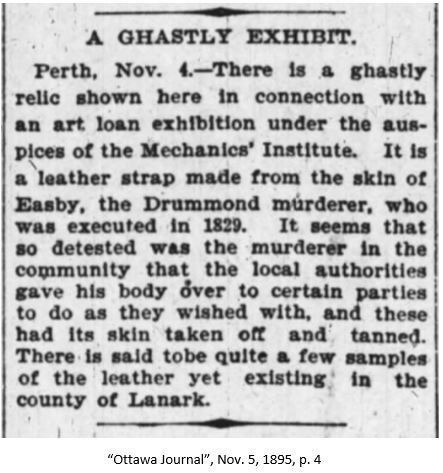
Hide was Sold
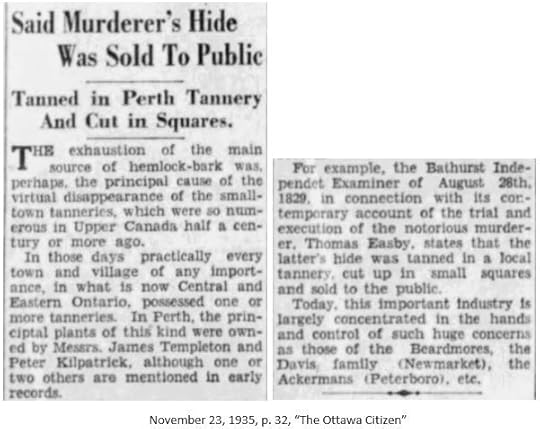
Jail Employees Recall
Stories of Easby
It’s been said that of all the convicted criminals who were hanged in Perth, Thomas Easby was perhaps the most notorious. When it was announced in the summer of 1994 that the Perth jail was closing, “The Ottawa Citizen” sent a reporter, and the employees recalled hearing the stories of Easby’s hanging.

According to one of the workers at the Perth jail, “He (Easby) was kept in the original Perth Jail for several months before he was publicly hanged, the rope adjusted with great dexterity in front of a huge crowd of townspeople. Then his body was dug up, skinned, and tanned, and the bits were sold off and made into wallets and knick-knacks.

Chuck Stewart, the Superintendent, said that many more people were hanged over the years in Perth, and that the last hanging was in 1910, at the permanent gallows, at the back of the jail. The noose hook has since been covered by a light fixture, and the lever which activated the trap door in the floor has been removed. In its place is a chair on the wooden floor overlooking the exercise yard.
“Murder, as foul as it comes.”
When asked about the future of the jail, Stewart said the cells and prisoners’ areas are tiny and the plumbing and electrical systems are a nightmare. There are rumours of turning it into a bed and breakfast, but according to Stewart, “Bed and breakfast people don’t like sleeping in cells.” Ottawa Citizen Reporter, Kelly Egan, added, “…and who would rest easy on the ground where Thomas Jeremiah Easby met his gruesome end, for murder as foul as it comes.”
What Became of
Little Joseph Easby?
And what became of young Joseph Easby, orphaned at the age of 4, and the only surviving member of his family? In a letter dated in 1857, regarding the estate of Joseph Easby, he had drowned at age 32, unmarried, after falling from a ship in the Toronto harbour.
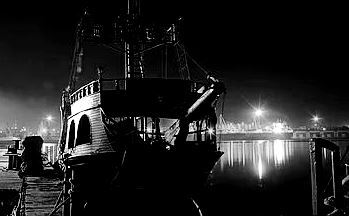
In the small community of people who lived around Balderson, the story of the tragedy that took place at the Easby farm was told and re-told down through the generations; and although they are fewer in number these days, some still claim to possess items fashioned from the hide of Thomas Easby.
Anyone who has visited the pretty hamlet of Balderson, and knows their long history and stellar reputation for cheese-making, would no doubt be surprised to learn of the gruesome and grisly events that took place at the Easby house, on that dark, cold, winter’s night in 1828.
Further reading: A book was published in 1903, written by Robert L. Richardson, the grandson of Martha and Thomas Richardson, who cared for little Joseph Easby, until he was adopted and raised by a couple in Toronto. His book, “Colin of the Ninth Concession”, was loosely based on the Easby murders.
Arlene Stafford-Wilson

Honorary Life Member, Lanark County Genealogical Society
Lanark County Pioneer Families Humanitarian Award
Francois Bregha Storyteller Award
Member, Association of Professional Genealogists
Author of: “Lanark County Kitchen”, “Lanark County Christmas”, “Lanark County Comfort”, “Lanark County Collection”, “Lanark County Calling”, “Lanark County Classics”, “Lanark County Connections”, “Lanark County Calendar”, “Lanark County Chronicle”, “Lanark County Kid”, and “Recipes & Recollections”
New – Fall 2024
“Lanark County Classrooms: Remembering Our School Days”
“A delightful collection of stories and memories from former students and teachers, spanning the 1940s through the 1980s, in small towns, villages, and the rural one-room schools, across Lanark County”



